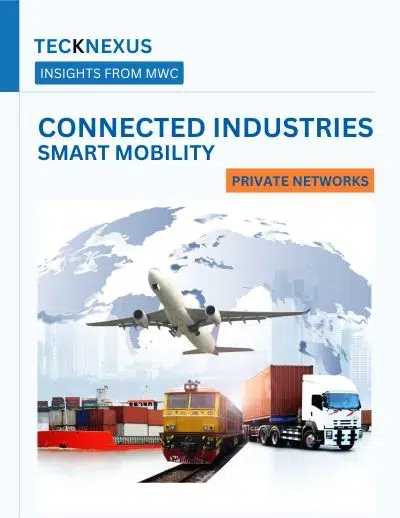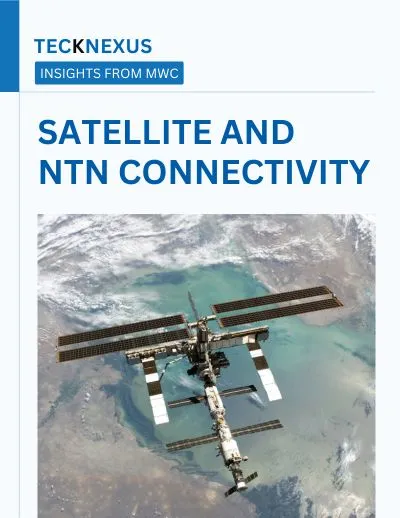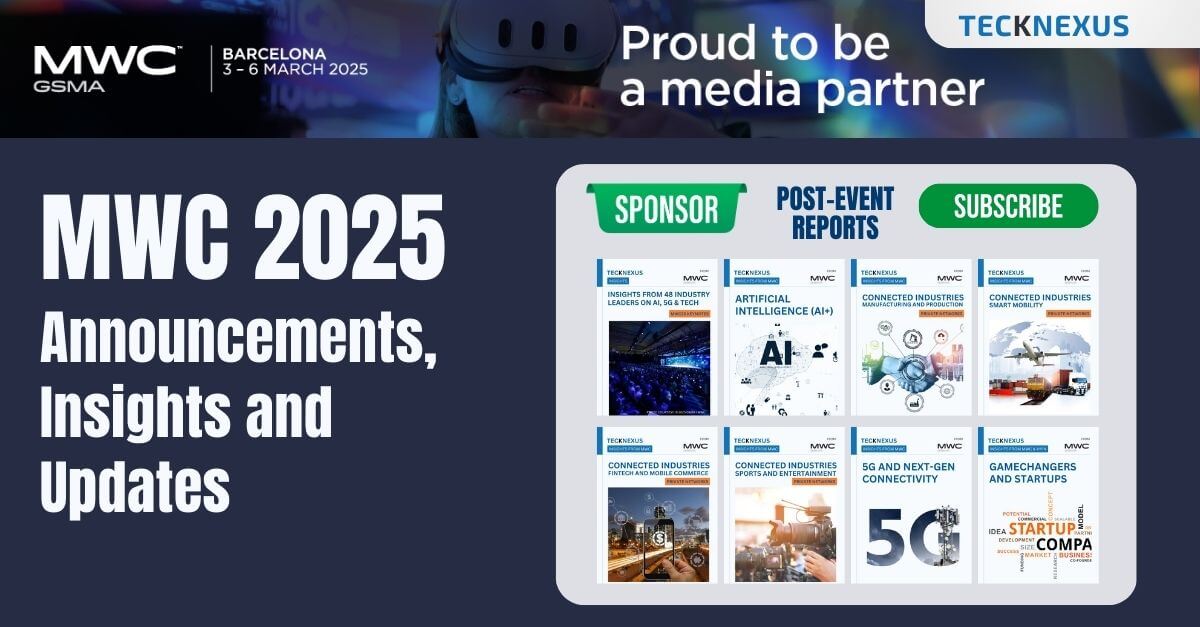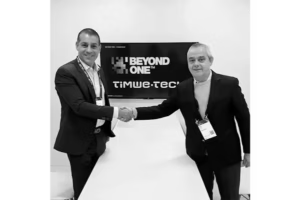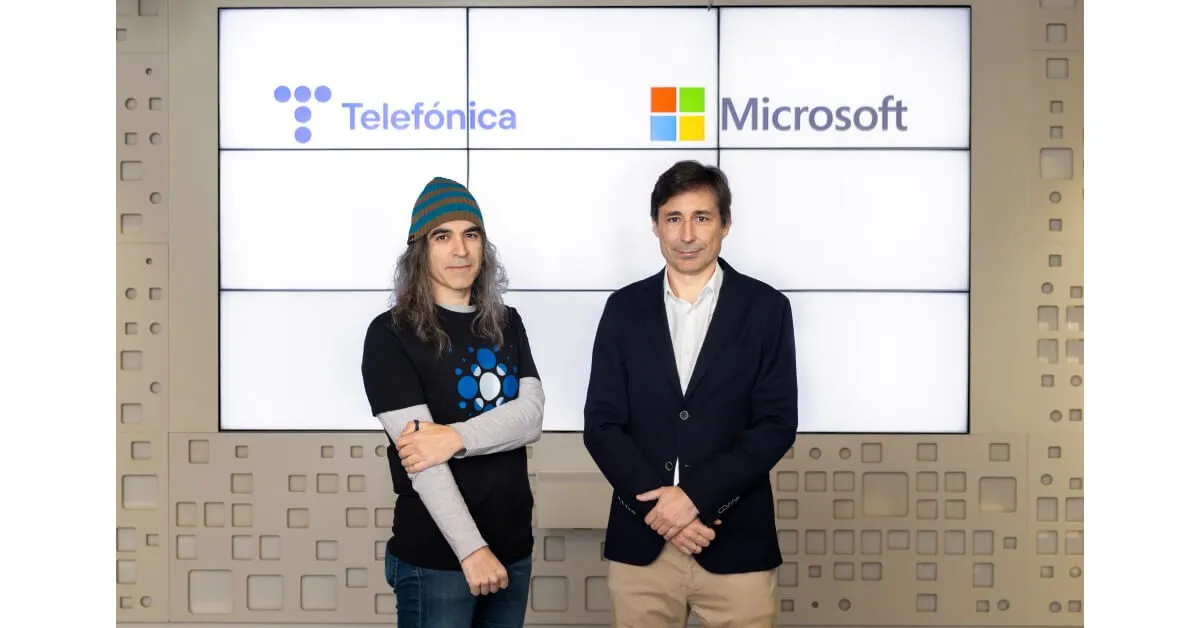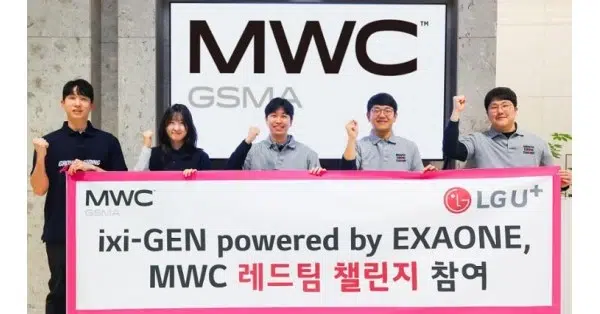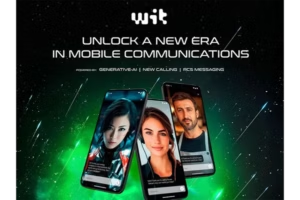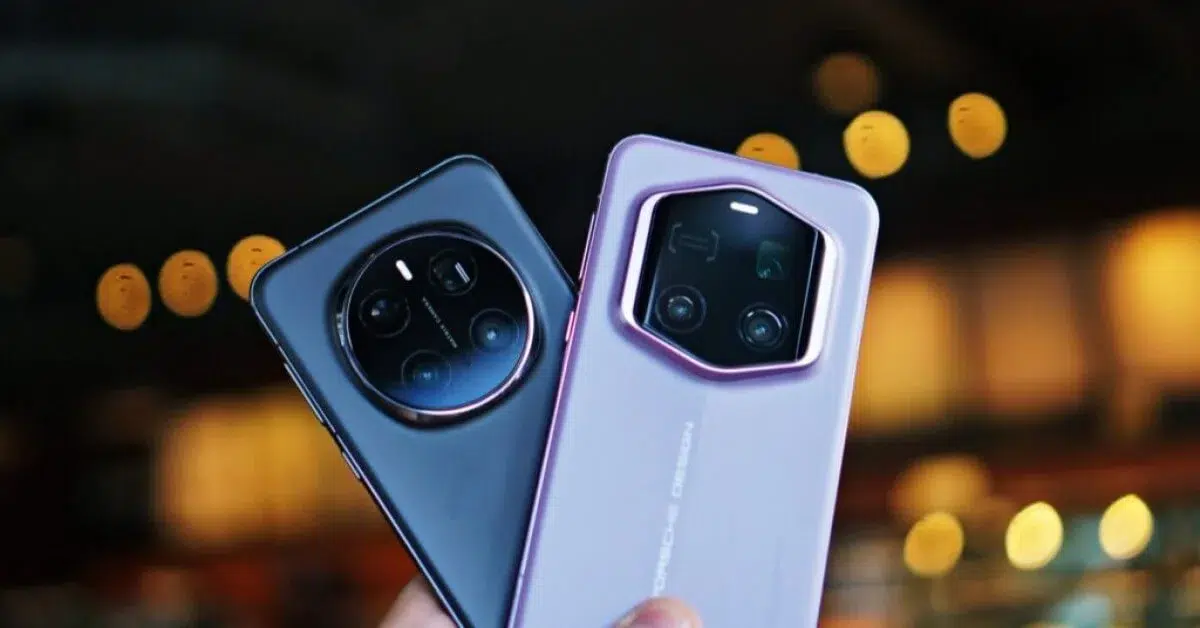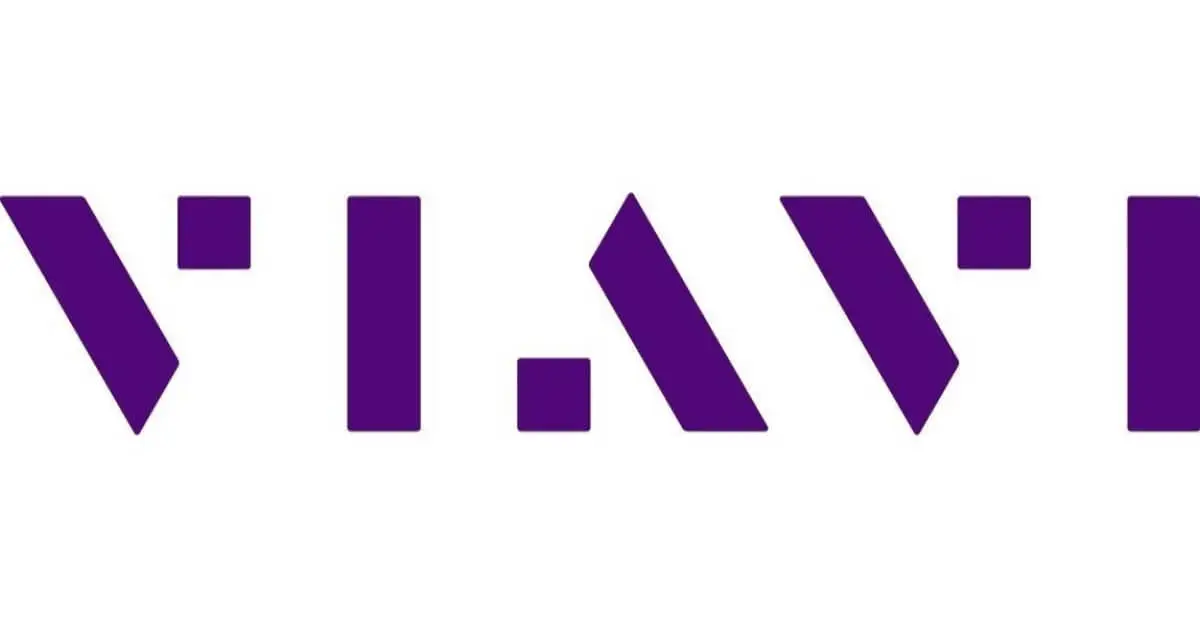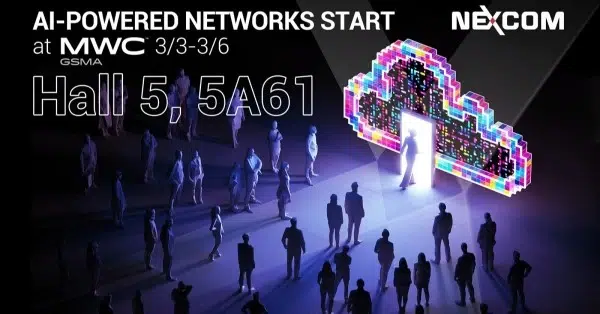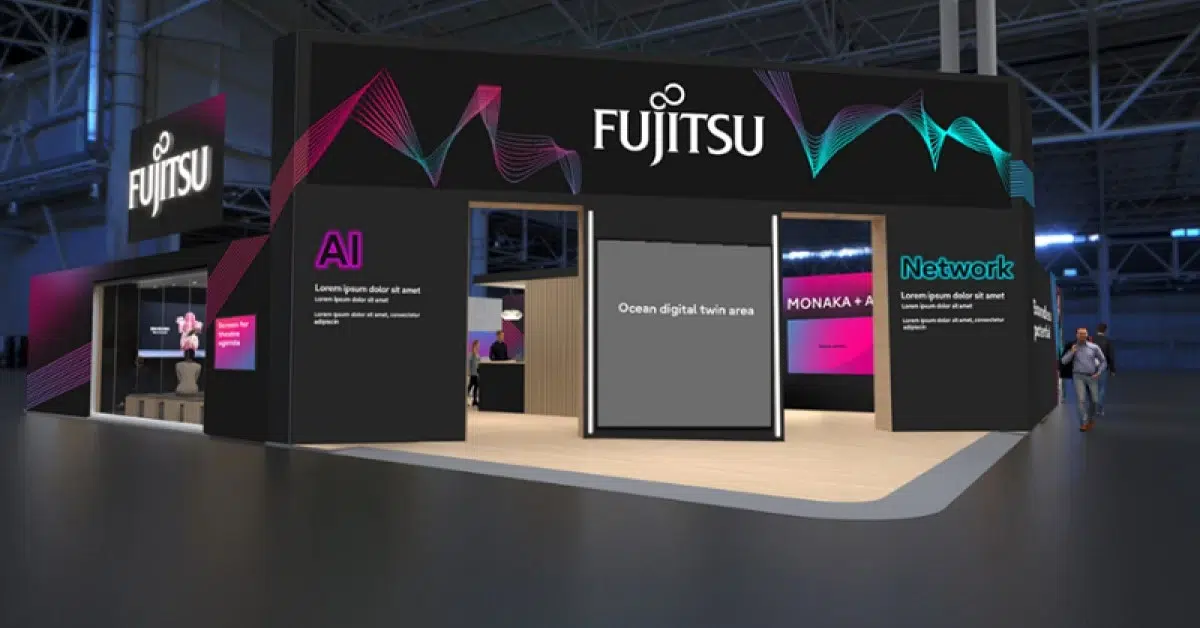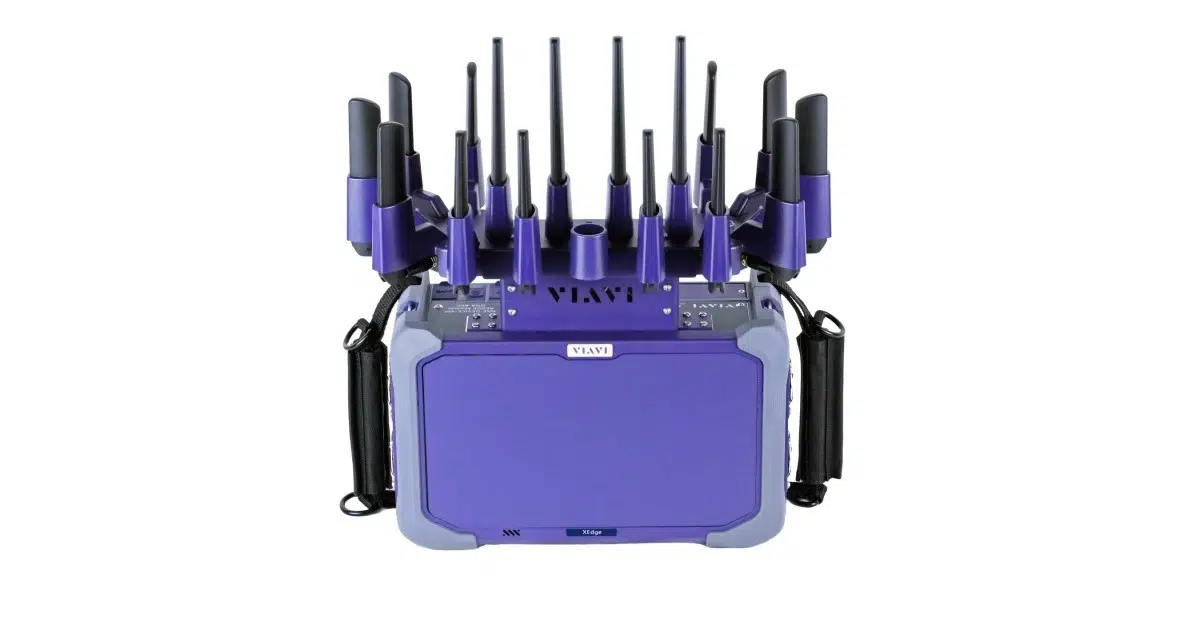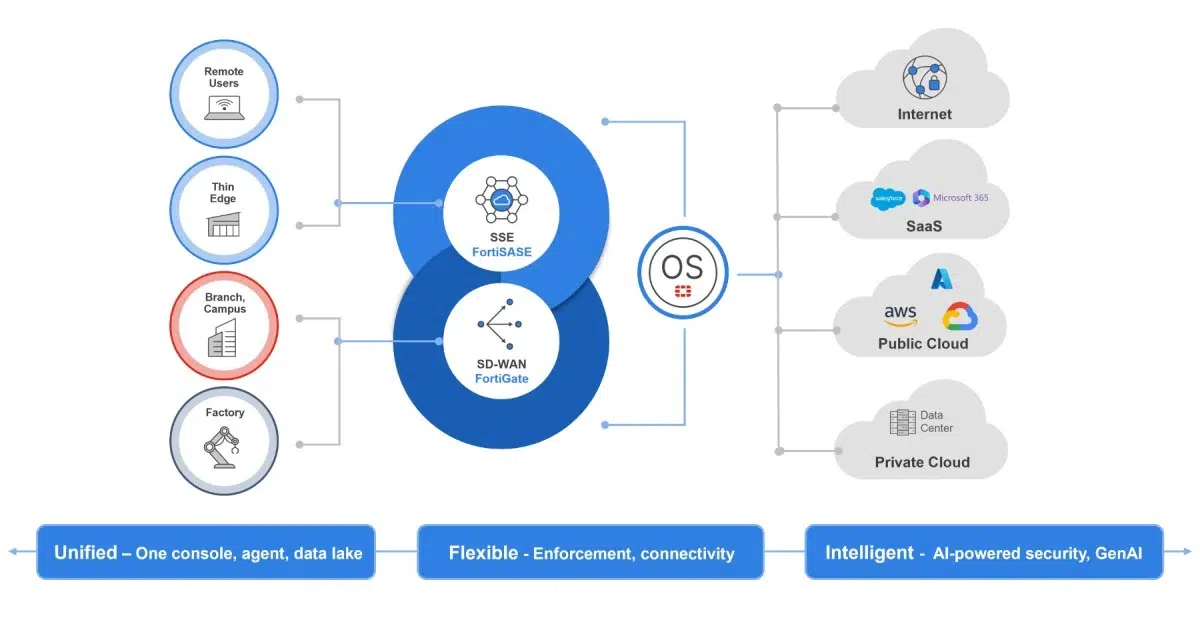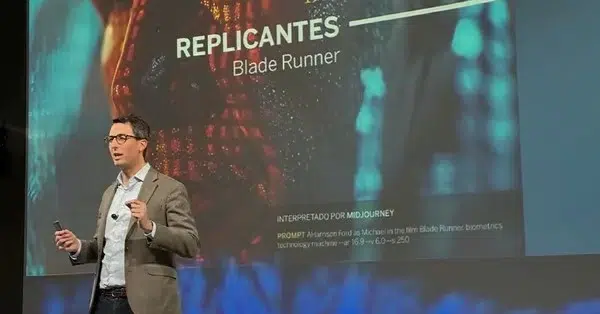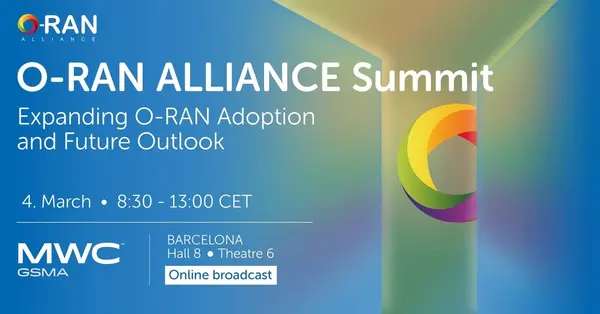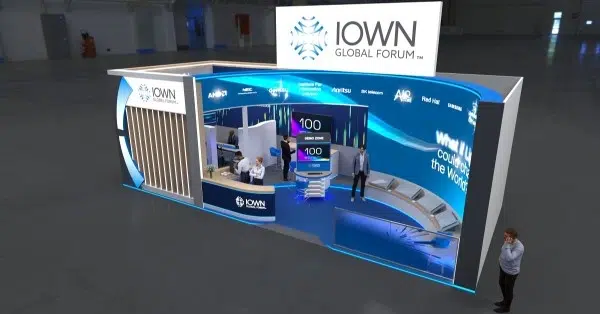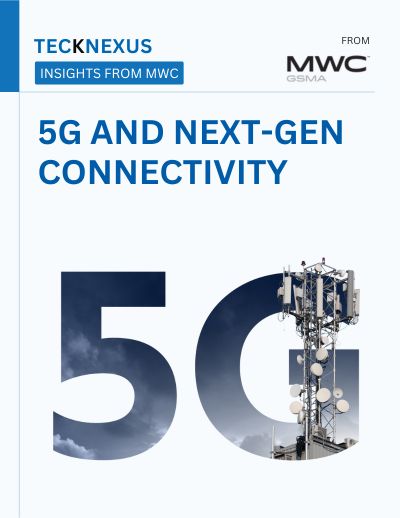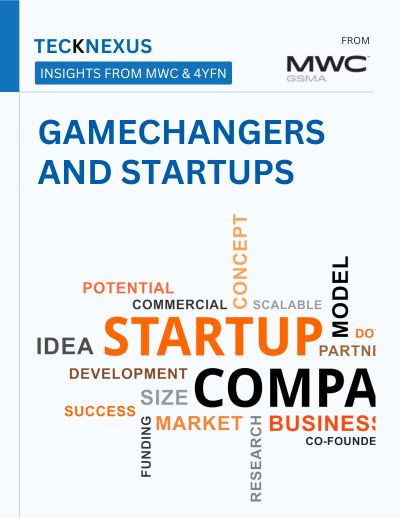MWC 2025: ITU’s Partner2Connect Secures $73B for Global Digital Expansion
Core Announcement:
The International Telecommunication Union (ITU) announced that its Partner2Connect (P2C) Digital Coalition has reached $73 billion in commitments to expand digital infrastructure and bridge the global connectivity gap. These pledges were unveiled during Mobile World Congress 2025 as part of ITU’s goal to provide universal and meaningful Internet access.
Innovation & Key Features:
- MTN Group has pledged to invest $2 billion annually over the next five years to expand mobile networks across Africa, strengthening digital inclusion.
- Globalstar is committing $2 billion to expand its low Earth orbit (LEO) satellite network, enhancing direct-to-device (D2D) and IoT connectivity in remote areas.
- ITU’s initiative aligns with its broader goal of securing $100 billion by 2026 for digital transformation projects, particularly in underserved regions.
Industry Impact & Use Cases:
- The initiative targets the 2.6 billion people worldwide who remain offline, focusing on last-mile connectivity solutions.
- Strengthening digital infrastructure is crucial for economic development, education, healthcare, and financial inclusion, especially in developing countries.
- The expansion of satellite and mobile networks will enable seamless and affordable communication in previously unreachable areas.
Competitive Positioning:
- MTN’s sustained investment reinforces its role as a leader in African telecom infrastructure, competing with other regional players in mobile broadband expansion.
- Globalstar’s LEO satellite investment positions it against major competitors like Starlink and OneWeb, focusing on low-latency, energy-efficient global connectivity solutions.
- ITU’s initiative aligns with broader UN and global digital inclusion efforts, differentiating itself by facilitating public-private partnerships on a large scale.
Strategic Business Implications:
- ITU estimates that $1.6 trillion in hardware costs will be required to fully connect the world, underscoring the need for continued investment.
- Governments and private sector leaders will need to collaborate on policies and funding to maximize the impact of these commitments.
- The success of Partner2Connect could accelerate the adoption of emerging technologies, such as AI-driven connectivity solutions and next-generation mobile networks, shaping the future of global digital access.
Notable Quote:
“In space, on land, and under the sea, expansive digital infrastructure highlights how much humanity values and depends on meaningful connectivity,” said ITU Secretary-General Doreen Bogdan-Martin. “These new pledges bring us even closer to delivering sustainable digital transformation to everyone, everywhere.”
MWC 2025 Insights: Smart Axiata Joins GSMA Open Gateway for Digital Security
Core Announcement:
Smart Axiata has signed a Memorandum of Understanding (MoU) at MWC25 Barcelona to collaborate on the GSMA Open Gateway initiative, deploying federated CAMARA APIs to enhance digital security, fraud prevention, and seamless service integration in Cambodia.
Innovation & Key Features:
- Adoption of GSMA Open Gateway’s universal network APIs, enabling direct access to telecom networks for enterprise developers.
- Integration of CAMARA APIs, a standardized framework developed by Linux Foundation and TM Forum, to simplify digital service deployment.
- Focus on identity verification, fraud prevention, and interoperability across networks.
Industry Impact & Use Cases:
- Fintech, e-commerce, and digital service providers can launch solutions more efficiently while ensuring secure transactions and user protection.
- Strengthens Cambodia’s digital economy by providing a scalable and trusted infrastructure for business expansion and service innovation.
- Enhances fraud detection and digital trust, improving user confidence in online transactions and interactions.
Competitive Positioning:
- Aligns Smart Axiata with global telecom leaders participating in the GSMA Open Gateway initiative, which includes 72 mobile operator groups covering 80% of global connections.
- Establishes Smart Axiata as a key player in Cambodia’s digital transformation, leveraging 5G capabilities and global API standards.
- Competes with regional and global telecoms by offering advanced security and interoperability solutions to developers and businesses.
Strategic Business Implications:
- Strengthens public-private collaboration on digital infrastructure and fraud prevention.
- Accelerates digital transformation in Cambodia, encouraging more businesses to adopt secure, API-driven solutions.
- Positions Smart Axiata as a trusted partner for enterprises, fostering innovation in digital finance, e-commerce, and smart services.
Notable Quote:
“This collaboration is not just about technology; it’s about empowering our community through enhanced protection against fraud and fostering innovation, ensuring that every individual and business can thrive in the digital economy.” – Ziad Shatara, CEO of Smart Axiata.
MWC 2025: GSMA M360 LATAM Showcases 5G & AI for Latin America
Core Announcement:
GSMA M360 LATAM, set for May 28-29, 2025, in Mexico City, will bring together industry leaders to discuss the maturation of 5G and the rapid evolution of AI. The event will explore real-world applications of emerging technologies and the policies shaping digital transformation in Latin America.
Innovation & Key Features:
- Focus Areas: AI integration, GSMA Open Gateway use cases, green technology for economic growth, 5G mobile fiber, Non-Terrestrial Networks (NTN), cybersecurity, and evolving user habits.
- Collaboration with CLTD: The Latin American Congress on Digital Transformation (CLTD), co-organized with ASIET and the Inter-American Development Bank (IDB), will highlight policy frameworks for network sustainability, mobile internet expansion, and regulatory modernization.
Industry Impact & Use Cases:
- Advancing 5G adoption: Discussions on fiber and NTN will help define strategies to improve network reach and reliability.
- AI for digital transformation: Industry leaders will explore how AI-driven solutions are enhancing efficiency, automation, and customer experiences across multiple sectors.
- Cybersecurity & policy frameworks: Governments and industry experts will discuss regulatory modernization and risk mitigation strategies to secure digital infrastructure.
Competitive Positioning:
- Regional leadership in connectivity: By hosting M360 LATAM and CLTD, GSMA solidifies its role in shaping Latin America’s telecom landscape.
- 5G and AI at the forefront: The event positions itself as a key platform for industry players to showcase cutting-edge AI and 5G advancements, setting it apart from general tech conferences.
- Cross-sector engagement: Unlike competitor events, M360 LATAM emphasizes public-private partnerships, bringing together government bodies, businesses, and academia to drive inclusive digital progress.
Strategic Business Implications:
- Accelerating 5G rollout: The discussions could influence investments and policy decisions that drive wider 5G adoption.
- Regulatory modernization: Policymakers may refine spectrum allocation, cybersecurity mandates, and AI governance to enable smoother tech integration.
- Growth opportunities for telecom and AI sectors: Businesses exploring AI-powered automation, smart networks, and green technologies will find new avenues for expansion and innovation.
Notable Quote:
“M360 LATAM will spotlight how AI and 5G are transitioning from promise to practical applications, shaping the future of connectivity in Latin America.” – GSMA Representative.
MWC 2025: Talent Arena Unites Europe’s Top Developer Community in Barcelona
Core Announcement:
The first edition of Talent Arena, organized by Mobile World Capital Barcelona (MWCapital), gathered over 20,000 developers from 115 countries at Fira Montjuïc. The event positioned Barcelona as a leading hub for digital professionals by focusing on AI, cybersecurity, quantum computing, and digital talent development. Talent Arena will return in 2026 with an expanded program, fully integrating into MWC Barcelona at Fira Gran Via.
Innovation & Key Features:
- Technology Focus: Sessions covered AI advancements, quantum computing, NewSpace, and Europe’s technological sovereignty.
- GSMA Open Gateway Hackathon: Developers tested projects in real network conditions for the first time, leveraging data from major telecom providers.
- Workshops & Mentorship: 45 workshops on emerging tech trends and over 50 mentors guiding developers on career opportunities.
- High-Profile Speakers: Featured Steve Wozniak (Apple co-founder), Cassie Kozyrkov (AI expert, Google), and Garry Kasparov (AI thought leader), along with top executives from Google, MIT, and global enterprises.
Industry Impact & Use Cases:
- Developer Community Growth: The event strengthens Barcelona’s position as a digital talent capital, attracting both senior professionals and young talent.
- Bridging the Digital Skills Gap: Discussions centered on retaining talent in the competitive tech industry and upskilling digital professionals.
- Real-World AI and 5G Applications: The GSMA Open Gateway DevCon demonstrated API-based network services from Nokia, TikTok, China Telecom, and Elmo.
Competitive Positioning:
- Largest Developer-Focused Event in Europe: Talent Arena differentiates itself by being exclusively dedicated to digital talent, AI, and cutting-edge tech applications.
- Integration with MWC Barcelona: The event expands MWC’s impact beyond mobile technology, merging telecom, AI, and cybersecurity communities.
- Strengthening Public-Private Collaboration: Backed by GSMA, government agencies, and major tech firms, reinforcing its role in Europe’s digital transformation.
Strategic Business Implications:
- Boosting Barcelona’s Tech Ecosystem: The event enhances the city’s reputation as a global hub for AI, digital security, and emerging tech industries.
- New Opportunities for Companies & Investors: Increased engagement from global enterprises, startups, and policymakers fosters new collaborations and investments in Europe’s tech sector.
- Scaling Talent Development: The focus on workshops, hackathons, and mentorship provides a direct pipeline for recruitment and professional growth.
Notable Quote:
“Talent Arena highlights the essential role of digital professionals in developing the technologies that are transforming the world. It also addresses the critical challenge of talent generation to meet the ICT sector’s rapid expansion.” – Francesc Fajula, CEO of Mobile World Capital Barcelona.
MWC 2025: Beyond ONE & TIMWETECH Expand Direct Mobile Payments in Saudi & Oman
Core Announcement:
Beyond ONE has partnered with TIMWETECH to introduce a Direct Carrier Billing (DCB) platform for 3.5 million Virgin Mobile and FRiENDi subscribers in Saudi Arabia and Oman. The collaboration will allow prepaid mobile users to access and pay for premium digital content—including streaming, gaming, infotainment, and AI-powered tools—directly through their mobile accounts, eliminating the need for credit cards.
Innovation & Key Features:
- Direct Carrier Billing (DCB): Enables frictionless payments by allowing customers to subscribe and pay for digital services using their mobile balance.
- Broad Digital Content Access: Includes on-demand video, live sports, gaming, interactive content, and educational tools.
- Enhanced Security & Consumer Protections:
- Double opt-in confirmations to prevent accidental subscriptions.
- AI-powered fraud detection for real-time transaction monitoring.
- Clear spending alerts and subscription management tools for user control.
- Accelerated Service Deployment: TIMWETECH’s platform will speed up onboarding of new content providers by up to 50%, ensuring continuous expansion of entertainment options.
Industry Impact & Use Cases:
- Expanding Digital Access in Emerging Markets:
- Addresses low credit card penetration (below 30%) by providing financially inclusive access to premium digital services.
- Supports mobile-first economies where prepaid mobile accounts act as primary financial tools.
- Enhancing User Experience:
- Simplifies subscription payments for digital services, particularly for users without traditional banking access.
- Provides a seamless and secure content experience within trusted mobile ecosystems (Virgin Mobile & FRiENDi).
- Boosting Digital Economy Growth:
- Creates new revenue streams for telecom operators and content providers.
- Encourages regional and global digital entertainment adoption.
Competitive Positioning:
- Differentiates Virgin Mobile & FRiENDi from competitors by offering carrier-integrated content access without requiring external payment methods.
- Strengthens TIMWETECH’s presence in the Middle East by expanding its carrier-grade VAS aggregation technology in high-growth markets.
- Competes with global fintech and digital payment solutions by providing an alternative to traditional credit card-based transactions.
Strategic Business Implications:
- Enhances Monetization Opportunities: Telecom providers gain a new revenue channel through content subscription services.
- Improves Customer Retention & Engagement: Simplified billing and premium content offerings can increase customer loyalty and reduce churn.
- Accelerates Digital Inclusion Efforts: Expands access to educational, entertainment, and AI-powered tools for underserved populations.
Notable Quote:
“In fast-growing economies, mobile accounts often serve as people’s primary financial tool. By connecting these accounts directly to digital content, we’re removing long-standing barriers and democratizing access to services that can educate, entertain, and improve quality of life.” – Hani ELKukhun, CEO of Beyond ONE MEA.
MWC 2025: G6 Urges Policy Reforms to Bridge Africa’s Digital Divide
Core Announcement:
The Africa Group of Six (G6)—Airtel, Axian Telecom, Ethiotel, MTN, Orange, and Vodacom—met at MWC25 Barcelona to push for stronger policy commitments that address Africa’s 60% mobile internet usage gap, affecting 710 million people. The coalition outlined key strategies in fiscal policy reform, digital and energy infrastructure investment, and environmental sustainability, emphasizing that closing the digital divide could generate $170 billion in additional GDP by 2030.
Innovation & Key Features:
- Fiscal Policy Reforms: Advocacy for reduced taxes on low-end smartphones and mobile data to improve device affordability and digital inclusion.
- Investment in Infrastructure: Collaboration with global financial institutions (World Bank, IMF, ITU, GSMA Handset Affordability Coalition) to expand broadband access and promote fair regulatory frameworks.
- Energy Access & Sustainability: Support for Mission 300, an initiative led by the World Bank and African Development Bank, aiming to bring electricity to 300 million Africans by 2030 and integrate green energy solutions in telecom operations.
- Fair Contribution Frameworks: Advocacy for regulatory policies requiring Large Traffic Originators (e.g., major tech platforms) and Non-Terrestrial Networks (satellite providers) to contribute to digital infrastructure investment.
Industry Impact & Use Cases:
- Economic Growth: Expanding digital access could unlock $170 billion in GDP by 2030, reinforcing the mobile sector’s role in economic resilience and financial inclusion.
- Bridging the Connectivity Gap: By promoting affordable smart devices and shared infrastructure, G6 aims to extend mobile internet access to underserved populations.
- Sustainable Development: The telecom sector’s commitment to integrating green energy solutions aligns with global efforts to reduce carbon footprints and support rural connectivity.
Competitive Positioning:
- Advancing Digital Inclusion: The G6 coalition differentiates itself by combining policy advocacy with infrastructure expansion, ensuring digital transformation efforts are economically sustainable.
- Influencing Regulatory Reforms: By working with the World Bank, IMF, and UNECA, G6 seeks to reshape tax structures and financial policies that impact digital access.
- Infrastructure Sharing in the AI Era: G6 emphasizes that collaborative infrastructure models across telecom and AI-driven technologies can help scale connectivity faster than traditional, siloed investments.
Strategic Business Implications:
- Investment Incentives: The push for reduced sector-specific taxes on mobile devices and mobile money transactions could attract more investment into Africa’s digital economy.
- Public-Private Partnerships: Stronger collaborations between governments, financial institutions, and telecom operators are necessary to sustain digital transformation.
- Scalability & Innovation: Adoption of AI, satellite-based connectivity, and alternative power solutions could help extend coverage to remote areas, reducing reliance on traditional infrastructure.
Notable Quote:
“Bridging Africa’s digital divide isn’t just about connectivity—it’s about economic opportunity, financial inclusion, and ensuring no one is left behind in the digital revolution.” – G6 Coalition Statement.
MWC 2025: Skyfora Raises €4M for AI-Powered Weather Forecasting Tech
Core Announcement:
Skyfora has raised €4 million in funding to accelerate the deployment of its Telecom GNSS Meteorology solution, which turns cell towers into high-resolution weather sensors. The funding, led by Ugly Duckling Ventures and LUMO Labs, will support scaling this AI-driven weather intelligence technology across global markets.
Innovation & Key Features:
- Cell Towers as Weather Sensors: Skyfora’s solution leverages existing telecom infrastructure to collect real-time atmospheric data without requiring additional hardware investments.
- AI-Powered Weather Forecasting: The platform improves forecast accuracy, surpassing traditional numerical models by integrating real-time, first-party meteorological data.
- Enhanced Extreme Weather Predictions: Provides a continuous data stream for AI models, improving early warning systems and disaster preparedness.
- New Revenue for Mobile Operators: Telecom providers can monetize their infrastructure by selling weather data without modifying their networks.
Industry Impact & Use Cases:
- Disaster Response: More precise weather predictions improve emergency preparedness and response.
- Aviation & Transportation: Real-time weather insights enhance flight safety, navigation, and logistics.
- Agriculture & Renewable Energy: Optimized forecasting benefits crop management and energy production.
- Insurance & Financial Services: More accurate weather risk assessments reduce economic losses and financial risks.
Competitive Positioning:
- Unlike traditional weather satellites and ground stations, Skyfora’s approach utilizes existing telecom networks, providing more frequent and localized weather data at a fraction of the cost.
- The ability to collect, process, and distribute real-time meteorological data gives it a competitive advantage over legacy weather modeling systems.
- AI integration enables continuous improvements in forecasting accuracy, setting it apart from static, physics-based weather models.
Strategic Business Implications:
- Scaling AI-driven weather intelligence to support global climate resilience efforts.
- Expanding partnerships with telecom providers to integrate weather monitoring capabilities without additional infrastructure costs.
- Positioning for further investments from governments and industries seeking advanced climate monitoring solutions.
- Potential regulatory opportunities as governments look to improve national weather prediction systems using private-sector innovation.
Key Quotes:
Fredrik Borgström, CEO of Skyfora:
“Our technology fills critical observation gaps, providing AI models with a continuous flow of high-resolution data—what we call ‘superfood’ for AI models—while enabling MNOs to monetize their infrastructure in a completely new way.”
Svetoslava Georgieva, Chair of the EIC Fund Board:
“Skyfora’s next-generation weather intelligence has the potential to save lives, mitigate economic disruptions, and improve financial risk assessment.”
Andreas Green Rasmussen, Ugly Duckling Ventures:
“The future of AI depends on high-quality first-party data, and Skyfora’s ability to harness telecom networks for atmospheric monitoring makes them a unique and valuable investment.”
MWC 2025: Valencia & Tallinn Announce Startup Challenge for Climate Resilience
Core Announcement:
Startup Valencia and Estonia’s e-Residency Programme, in collaboration with the City Councils of Valencia and Tallinn, have launched the Valencia DANA Project—a global startup challenge aimed at developing innovative solutions for mitigating natural disasters. The initiative seeks startups specializing in emergency management, climate resilience, urban sustainability, and infrastructure innovation. Winning teams will test their solutions in Valencia from June to October 2025.
Innovation & Key Features:
- High-Impact Hackathon: A two-day event in Tallinn (May 20-21, 2025) during Latitude59, where startups and experts will develop disaster response solutions.
- Real-World Testing: Selected startups will pilot their technologies in Valencia, with support from local institutions.
- Funding & Exposure: The project offers €50,000 in prizes, and winners will showcase their solutions at VDS 2025, an international tech event with 12,000+ attendees from 120 countries.
- Cross-Border Collaboration: The challenge brings together European cities, entrepreneurs, and governments to create scalable climate resilience solutions.
Industry Impact & Use Cases:
- Disaster Preparedness & Urban Resilience: Solutions will focus on anticipating and responding to extreme weather events affecting cities.
- Smart Infrastructure & Sustainability: Technologies will aim to enhance urban sustainability and reduce climate-related risks.
- Global Scalability: Winning projects will have the opportunity to scale their solutions beyond Valencia to other urban environments worldwide.
Competitive Positioning:
- First-of-Its-Kind Collaboration: Unlike other climate-focused initiatives, this challenge uniquely combines public-private partnerships, urban testing, and startup-driven innovation.
- Valencia & Tallinn as Innovation Hubs: Positions both cities as global leaders in sustainable urban development and climate resilience.
- Integration with Major Tech Events: The initiative leverages exposure at Latitude59 and VDS, ensuring international visibility for participating startups.
Strategic Business Implications:
- Encouraging Investment in Climate Tech: The challenge supports the growth of startups focused on disaster management and urban sustainability.
- Scaling Public-Private Partnerships: By involving city governments, institutions, and startups, the project accelerates policy-driven innovation.
- Strengthening EU Climate Initiatives: Supports broader European sustainability goals by promoting technology-driven disaster resilience solutions.
Notable Quotes:
“This initiative reinforces our commitment to innovation and sustainability, promoting technological solutions that help cities adapt to climate change challenges.” – Nacho Mas, CEO of Startup Valencia
“By leveraging innovation and international cooperation, we can develop solutions that safeguard urban environments and set a global benchmark for resilience and disaster preparedness.” – Margot Roose, Vice Mayor of Tallinn
MWC 2025: Telefónica & Microsoft Strengthen Open Gateway with AI-Powered Kernel
Telefónica and Microsoft are deepening their collaboration to migrate Telefónica’s AI-driven digital platform, Kernel, to a SaaS model on Azure. This will accelerate the adoption of Open Gateway, a GSMA-led initiative that transforms telecom networks into programmable platforms, enabling greater flexibility and innovation.
Innovation & Key Features:
- Kernel Migration to Azure: Telefónica’s Kernel platform will be migrated to Microsoft Azure as a SaaS product, simplifying digital transformation for telecom operators.
- Generative AI & Advanced Analytics: The integration of Azure AI will enhance Kernel’s capabilities, improving automation, decision-making, and digital service development.
- Microsoft Azure Marketplace Integration: Kernel-based digital services will be made available on Microsoft’s Azure Marketplace, providing access to operators, developers, and telecom companies.
Industry Impact & Use Cases:
- Telecom operators can leverage Kernel on Azure to streamline network management, AI-driven customer experiences, and digital service deployment.
- Developers and ISVs (Independent Software Vendors) will gain easier access to network APIs, enabling innovation in smart connectivity, AI-powered applications, and edge computing.
- Business transformation through data analytics, automation, and AI-driven insights for faster, more efficient service delivery in the telecom sector.
Competitive Positioning:
- By moving Kernel to Azure, Telefónica enhances scalability and accessibility, competing with other telecom cloud and AI platforms.
- Integration with Open Gateway and CAMARA APIs ensures cross-industry interoperability, differentiating it from proprietary telecom solutions.
- The collaboration with Microsoft reinforces Telefónica’s leadership in AI-powered telecom innovation, while Azure’s global infrastructure provides a competitive edge in deployment speed and reliability.
Strategic Business Implications:
- Accelerates telecom AI adoption by providing a ready-to-use, cloud-based solution with pre-integrated network APIs and analytics tools.
- Strengthens Telefónica’s positioning as a leader in AI-driven telecom platforms, increasing its appeal to global operators looking for scalable, automated solutions.
- Expands Microsoft’s influence in the telecom sector, making Azure a preferred cloud partner for AI-powered network solutions.
- Encourages industry-wide adoption of Open Gateway, standardizing API-driven telecom innovation and fostering broader ecosystem collaboration.
MWC 2025: LG Uplus Showcases ixi-GEN AI Security in Red Team Challenge
LG Uplus will submit its telecom-focused generative AI model, ixi-GEN, to security and reliability testing at the Gen AI Red Team Challenge during MWC 2025. This event allows ethical hackers to identify potential vulnerabilities in AI models.
Innovation & Key Features:
- ixi-GEN is a telecom-specific AI model derived from LG Group’s Exaone large language model.
- It is utilized in customer-facing roles, such as chat agents and store advisers.
- The Red Team Challenge will stress-test the AI against adversarial attacks to detect biases, hallucinations, and security weaknesses.
Industry Impact & Use Cases:
- The challenge will assess the security readiness of AI in telecom applications, a critical area given the increasing reliance on AI-driven customer service and automation.
- Successful participation will reinforce trust in AI-based telecom solutions, potentially accelerating AI adoption in customer support, sales, and service automation.
Competitive Positioning:
- By voluntarily subjecting ixi-GEN to rigorous security evaluation, LG Uplus positions itself as a leader in AI transparency and reliability.
- Competing AI models will also participate, but LG Uplus emphasizes its commitment to robust AI security as a key differentiator.
Strategic Business Implications:
- Enhancing AI security can strengthen customer confidence, encouraging broader AI adoption in telecommunications.
- Potential identification of weaknesses may lead to accelerated AI refinement and regulatory compliance.
- Success in the challenge could boost LG Uplus’s credibility in AI development, opening opportunities for partnerships and enterprise AI solutions.
MWC 2025: First Orion Expands Global Exchange for Branded Communication
Core Announcement:
First Orion has launched Global Exchange, a next-generation platform designed to enhance branded calling services across Europe and other international markets. The platform streamlines call authentication, branding, and cross-border communication for businesses and carriers, enabling secure, scalable, and real-time caller ID solutions.
Innovation & Key Features:
- Streamlined Customer Portal: Faster onboarding with an intuitive self-service interface.
- Optimized Back-End Infrastructure: Improved API integration, real-time data accuracy, and reduced system latency.
- Enhanced Global Scalability: Designed to support cross-border branded calling, expanding beyond the U.S. market.
- Improved Customer Experience: Increased reliability, flexibility, and usability for carriers and businesses.
Industry Impact & Use Cases:
- Telecommunications: Enables carriers to provide branded, authenticated calling services with enhanced fraud protection.
- Enterprise Communication: Businesses can brand their calls with names, logos, and call reasons, improving engagement and trust.
- Global Expansion: Facilitates seamless cross-border caller ID solutions, ensuring consistency in international markets.
Competitive Positioning:
- Offers a scalable global solution beyond the U.S., a key differentiator from competitors focused on domestic markets.
- API-driven architecture allows seamless carrier and business integration, reducing deployment time and costs.
- Positioned as a leader in branded communication solutions, leveraging real-time analytics for call program optimization.
Strategic Business Implications:
- Expands First Orion’s market share in Europe and other global regions.
- Strengthens anti-fraud and trust-building efforts in branded telecommunications.
- Creates new revenue opportunities for carriers and enterprises seeking enhanced customer engagement through branded calling.
- Sets the stage for future carrier partnerships and technology integrations to further optimize global connectivity solutions.
Key Quote:
“The Global Exchange is a transformative milestone for First Orion and our global partners,” said Josh Whitehurst, Head of Product at First Orion. “With this new version of our platform, we have reimagined our core technology to deliver real-time insights, faster deployment, and unmatched scalability.”
MWC 2025: HONOR Announces AI-Centric Strategy for Global Smart Devices
Core Announcement:
HONOR has announced the HONOR ALPHA PLAN, a strategic roadmap to transition from a smartphone brand to a global AI device ecosystem company. The three-step plan focuses on AI-powered devices, cross-industry collaboration, and long-term AI integration to reshape human-device interactions. HONOR will invest $10 billion over the next five years to accelerate this transformation.
Innovation & Key Features:
- AI-Driven Personal Mobile Assistant: The first GUI-based AI agent, developed in partnership with Google Cloud and Qualcomm, enhances task automation, contextual decision-making, and real-time scheduling based on user preferences.
- AiMAGE Imaging Technology: A hybrid device-cloud AI model for mobile photography, using a 1.3 billion parameter on-device model and a 12.4 billion parameter cloud model to enhance image clarity and telephoto quality.
- All-Ecosystem File Sharing: HONOR introduced a universal file transfer technology, enabling high-speed sharing across iOS, Android, and PC devices.
- AI Deepfake Detection: To improve content integrity, HONOR is integrating AI-driven deepfake detection into its flagship smartphones and foldable devices.
Industry Impact & Use Cases:
- AI in Everyday Life: The AI-powered personal assistant streamlines productivity by integrating with calendars, traffic data, and third-party services.
- Smartphone Innovation: AiMAGE technology pushes on-device AI capabilities, reducing reliance on cloud processing while enhancing real-time photography and video enhancements.
- Cross-Device AI Integration: The ecosystem-wide AI file-sharing system promotes seamless data transfer across different platforms, improving user experience.
- Enhanced Security: AI deepfake detection technology aims to combat misinformation and digital identity fraud in the growing era of AI-generated content.
Competitive Positioning:
- Shifting from a Smartphone Brand to an AI Ecosystem Leader: Unlike competitors focused solely on hardware, HONOR is investing in AI-first innovation to create an interconnected device ecosystem.
- AI Agent vs. Traditional Assistants: HONOR’s GUI-based AI personal agent differentiates itself by automating multi-step tasks and integrating real-time contextual awareness, unlike standard virtual assistants.
- Strategic Partnerships: Collaborating with Google Cloud, Qualcomm, Vodafone, Telefónica, and CKH Group, HONOR aims to build a cross-industry AI-powered infrastructure.
Strategic Business Implications:
- $10 Billion AI Investment: Aims to accelerate AI adoption across smartphones, PCs, tablets, and wearables, driving AI innovation beyond mobile.
- Long-Term AI Expansion: The HONOR ALPHA PLAN sets a three-stage AI evolution—from AI-powered devices (Agentic AI era) to AI-driven ecosystems (Physical AI era) and ultimately AGI-integrated civilization.
- Sustainability Commitment: HONOR plans to achieve operational carbon neutrality by 2040 and extend carbon-neutral policies across its supply chain by 2050.
Notable Quotes:
“The AI revolution will reshape the device industry—transforming productivity, society, and culture. To embrace this AI future, the industry must be open and collaborative.” – James Li, CEO of HONOR
“AI collaboration is key. We are deeply integrating Google’s Gemini AI models into HONOR solutions to create never-before-seen user experiences while ensuring privacy and security.” – Matt Waldbusser, Google Cloud
MWC25 Barcelona Highlights AI, 5G Standalone, and Open Gateway APIs in $11 Trillion Connected Future
Core Announcement:
MWC25 Barcelona focuses on the economic and technological impact of AI and 5G, highlighting that mobile technologies will contribute nearly $11 trillion to global GDP by 2030. Key discussions center on completing the transition to 5G Standalone, monetizing network APIs, and addressing the mobile usage gap affecting 3.1 billion people.
Innovation & Key Features:
- 5G Standalone (5G SA): Expected to drive 70% of enterprise revenue expansion through 2023-2030, unlocking a $127 billion market opportunity.
- GSMA Open Gateway APIs: 72 mobile operator groups, covering 80% of global mobile connections, are leveraging open network APIs to accelerate cross-industry adoption in automotive, aviation, and industrial applications.
- AI Integration in Mobile Networks: AI-driven efficiency gains will enhance network automation, predictive analytics, and real-time service adaptation.
- Mobile Economy Growth:
- 5G connections exceeded 2 billion in 2024, expected to surpass 4G adoption by 2028 and reach 57% of total mobile connections by 2030.
- Mobile internet adoption will grow from 4.7 billion users (58% of the population) in 2024 to 5.5 billion (64%) by 2030.
Industry Impact & Use Cases:
- Enterprise & Industrial Adoption:
- Manufacturing (25%), hospitality (17%), and public administration (14%) will be the biggest beneficiaries of mobile-driven digital transformation.
- 5G-enabled automotive and aviation innovations, supported by the 5G Automotive Association and Seamless Air Alliance, will enhance mobility, logistics, and in-flight connectivity.
- Closing the Mobile Usage Gap: With 3.1 billion people covered but not using mobile internet, unlocking this market could create a $3.5 trillion economic opportunity.
Competitive Positioning:
- 5G Standalone as a Differentiator: Unlike earlier deployments, 5G SA allows operators to fully leverage network slicing, low-latency applications, and AI-driven optimizations.
- Network APIs & Monetization: The GSMA Open Gateway initiative offers a unified framework for telecoms to generate new revenue streams, creating competition with hyperscalers and cloud service providers.
- Industry-Wide AI Adoption: AI is transforming network operations, customer engagement, and enterprise mobility, positioning telecoms as key players in the AI economy.
Strategic Business Implications:
- Investment Priorities: Spectrum allocation, 5G SA deployment, and API-driven services will be central to mobile operators’ growth strategies.
- Regulatory & Policy Considerations: Policymakers must address spectrum allocation, digital inclusion, and AI governance to maximize mobile-driven GDP growth.
- Cross-Industry Collaboration: The telecom industry is actively working with automotive, aviation, and enterprise sectors to develop scalable AI and 5G-powered applications.
Notable Quotes:
“Our industry connects nearly six billion people and powers economies worldwide. This week will highlight the opportunities—from 5G to AI—that will shape the future of the global digital economy.” – Mats Granryd, Director General, GSMA.
MWC 2025: XPANCEO Showcases Smart Contact Lenses for AR & Biosensing
Core Announcement:
XPANCEO has introduced five smart contact lens prototypes at MWC25 Barcelona, showcasing advancements in wireless powering, biosensing, intraocular pressure (IOP) monitoring, augmented reality (AR), and data transmission. These innovations aim to redefine wearable technology and digital health monitoring.
Innovation & Key Features:
-
Smart Contact Lens with Wireless Powering Companion
- Doubles the range of previous wireless power transfer solutions.
- Compact companion device enables convenient charging from a purse or pocket.
- Flexible and lightweight design ensures safe, everyday use with radiation levels comparable to common wearables like headphones.
-
Smart Contact Lens with IOP Sensor & Interactive Eye Model
- Non-invasive glaucoma monitoring system using an optical pattern on the lens.
- Real-time intraocular pressure readings via an AI-powered smartphone app.
- Provides instant, precise measurements for improved eye health management.
-
Biosensing Smart Contact Lens
- Measures glucose, cortisol, progesterone, vitamin levels, and other body parameters via tear fluid.
- Eliminates the need for invasive blood tests, paving the way for continuous personal health monitoring.
-
Smart Contact Lens for AR Vision
- Built-in microdisplay eliminates the need for external image sources.
- Miniaturized design surpasses previous smart glasses-sized AR solutions, making AR wearable technology more discreet and practical.
-
Smart Contact Lens for Data Reading
- Features an integrated wireless data transmission antenna.
- Enables real-time data transfer from the lens to a companion device.
- Companion device acts as both a charger and computational hub, streamlining functionality.
Industry Impact & Use Cases:
- Healthcare: Real-time glaucoma monitoring, biosensing, and health tracking without invasive procedures.
- Augmented Reality: A compact, wearable AR solution, potentially transforming gaming, navigation, and remote assistance.
- Data Communication: Contact lens-integrated wireless data transfer opens new possibilities in hands-free computing and smart wearables.
- Consumer Electronics: A breakthrough in lightweight, discreet wearables, offering greater convenience over existing smart glasses and headsets.
Competitive Positioning:
- First fully wireless-powered smart contact lens with an extended charging range, setting it apart from competitors.
- Industry-first biosensing and IOP tracking capabilities in a contact lens, offering medical-grade applications.
- Integrated microdisplay for AR, surpassing previous bulky smart glasses-based solutions.
- Mass-production-ready flexible electronics, demonstrating practical scalability for commercialization.
Strategic Business Implications:
- Disrupting the wearables market with compact, user-friendly alternatives to smart glasses and traditional health monitors.
- Bridging healthcare and consumer tech, offering real-time diagnostics and AR in a single device.
- Commercial potential in medical diagnostics, personal health monitoring, and AR-driven industries.
- Positioning XPANCEO as a leader in next-gen smart wearables, driving partnerships in healthcare, consumer tech, and telecommunications.
MWC 2025: Shush Inc. Earns GSMA CAMARA Certifications for Mobile Security
Core Announcement:
Shush Inc. has attained six GSMA CAMARA API certifications for fraud prevention, setting a new benchmark in mobile authentication and security. These certifications cover Number Verification, Device Reachability Status, Device Roaming Status, SIM Swap, Device Location Verification, and Device Location Retrieval—essential tools for enhancing fraud detection and securing mobile transactions.
Innovation & Key Features:
- GSMA CAMARA API Certifications: Standardized and interoperable APIs for seamless fraud prevention and authentication.
- Fraud Prevention API Suite: Provides real-time verification and security insights to protect against identity theft, unauthorized access, and account takeovers.
- Expanded Authentication Capabilities: In addition to certified APIs, Shush Inc. offers 37 additional API signals, further strengthening authentication measures for enterprises.
- Rapid Deployment: Can onboard a mobile network operator within 90 days, leveraging GSMA Open Gateway APIs for streamlined integration.
Industry Impact & Use Cases:
- Mobile Network Operators (MNOs): Strengthens authentication capabilities, reducing fraud risks and improving security for customers.
- Financial Services: Helps banks and fintech companies prevent SIM swap fraud, identity theft, and unauthorized account access.
- E-commerce & Digital Services: Enhances security for mobile-based transactions and digital identity verification.
- Regulatory Compliance: Supports industries that require robust security frameworks for fraud prevention and user authentication.
Competitive Positioning:
- Industry-Leading Fraud Prevention: Among the first companies to achieve six GSMA CAMARA API certifications, demonstrating leadership in mobile security.
- Interoperability & Standardization: APIs comply with GSMA Open Gateway standards, ensuring seamless integration across different mobile networks.
- Comprehensive Authentication Suite: Beyond GSMA-certified APIs, Shush Inc.’s 37 additional API signals offer unmatched fraud prevention capabilities.
- Faster Integration for MNOs: A 90-day onboarding process for mobile operators accelerates deployment compared to traditional solutions.
Strategic Business Implications:
- Strengthening Mobile Security: Helps MNOs and enterprises combat fraud, identity theft, and unauthorized access.
- Expanding Enterprise Adoption: Provides businesses with standardized authentication tools to enhance user verification processes.
- Enhancing Trust in Mobile Transactions: By ensuring security across digital interactions, Shush Inc. supports safer mobile commerce and digital banking.
- Future-Proofing Authentication: Aligning with GSMA Open Gateway and CAMARA APIs positions Shush Inc. as a key player in the evolution of mobile network security.
Notable Quotes:
Eddie DeCurtis, Co-Founder & CEO of Shush Inc.:
“This achievement solidifies Shush Inc.’s role as a pioneer and leader in network authentication. By obtaining six GSMA Open Gateway CAMARA certifications and offering an extensive suite of API signals, we are empowering Mobile Network Operators and enterprises with the most advanced and secure authentication solutions available today.”
Henry Calvert, Head of Network at GSMA:
“This milestone demonstrates [Shush Inc.’s] commitment to advancing authentication and security standards in the mobile ecosystem. By leveraging the GSMA Open Gateway initiative and CAMARA APIs, Shush Inc. is helping drive interoperability and trust for Mobile Network Operators, enterprises, and consumers worldwide.”
MWC 2025: WIT Software Debuts AINNOV8 AI Platform for Telecom Operators
Core Announcement:
WIT Software has introduced AINNOV8, an AI-driven software platform designed for mobile telecom operators to enhance digital services, customer engagement, and operational efficiency. The platform integrates New Calling Technology, RCS Messaging, and Generative AI to enable operators to create next-generation communication services.
Innovation & Key Features:
- AINNOV8 Platform: A comprehensive AI-powered telecom service platform that enhances voice, messaging, and digital interactions.
- New Suite of AI-Enabled Digital Services:
- CALL NOVA: AI-driven contact center solution for enhanced customer engagement.
- CALL SPARK: AI-powered business communication tool to improve customer-business interactions.
- CALL MATE: Next-generation voicemail replacement, using AI-generated virtual agents for call handling.
- CALL GENIE: Consumer-focused AI assistant, providing expert assistance via voice calls.
- CALL GOV: AI-powered government service platform for efficient digital public service interactions.
Industry Impact & Use Cases:
- Telecom Innovation: AINNOV8 leverages AI and RCS messaging to help operators monetize new services and increase customer retention.
- Enterprise & Customer Benefits: Businesses can enhance customer service automation, while consumers gain seamless AI-assisted experiences.
- Public Sector Applications: CALL GOV introduces a more efficient digital interface for government services.
Competitive Positioning:
- AI-Powered Communication: Unlike traditional voice and messaging platforms, AINNOV8 integrates Generative AI, real-time automation, and smart communication features.
- Differentiation in RCS & Voicemail Evolution: CALL MATE and CALL GENIE modernize voicemail and customer interaction, distinguishing them from standard IVR and chatbot solutions.
- Business & Government AI Solutions: Competes with traditional contact center AI providers by offering native telecom integration for a seamless customer experience.
Strategic Business Implications:
- New Revenue Streams: Operators can leverage AI-driven digital services to enhance customer engagement and upsell opportunities.
- AI Adoption in Telecom: The integration of AI-powered communication tools signals a broader industry shift toward intelligent, automated customer interactions.
- Regulatory & Data Security Considerations: With AI adoption in government services (CALL GOV), telecom operators must ensure compliance with data privacy regulations.
Notable Quote:
“AINNOV8 represents a significant step forward in AI-powered telecom solutions, enabling operators to unlock new revenue streams and create valuable customer connections.” – Luis Silva, CEO, WIT Software.
MWC 2025: RunEL Unveils 5G Positioning Tech with Centimeter-Level Accuracy
Core Announcement:
RunEL Next Generation Mobile Technologies (NGMT), in collaboration with a leading Israeli company, has successfully demonstrated a 5G-based positioning algorithm that achieves location accuracy within 5 to 7 centimeters—a two-order-of-magnitude improvement over existing wireless positioning methods. This breakthrough eliminates the need for GPS or additional geopositioning hardware, relying solely on 5G signals for ultra-precise location tracking.
Innovation & Key Features:
- Patented 5G Positioning Algorithm: Enables highly accurate location tracking using only 5G network signals, removing dependence on GPS.
- Precision Range: Achieves 5 to 7 cm accuracy, significantly improving over current meter-level positioning solutions.
- RunEL Sparq-2020 System on Chip (SoC):
- Optimized for Ultra-Reliable Low Latency Communication (URLLC) applications.
- Compliant with 5G 3GPP Release-15 standards.
- Delivers sub-250 microsecond latency, ideal for real-time awareness applications.
Industry Impact & Use Cases:
This innovation is poised to revolutionize multiple industries that require high-precision positioning:
- Factory 4.0: Enhances smart manufacturing with real-time asset tracking and automation.
- Autonomous Warehouses: Enables more efficient and safer automated inventory management.
- Robotics: Facilitates precise navigation and movement in dynamic environments.
- Drone Deliveries: Improves urban drone navigation and drop-off accuracy in dense areas.
- Remote Healthcare: Enhances real-time monitoring and interaction with medical devices.
- Online Gaming & Augmented Reality: Creates more immersive experiences through precise player tracking.
Competitive Positioning:
- No GPS Required: Unlike existing positioning solutions that rely on GPS or additional sensors, RunEL’s system functions entirely on 5G signals, reducing cost and dependency on satellite-based services.
- Unmatched Accuracy: 5-7 cm precision is far superior to traditional meter-level accuracy in commercial 5G systems.
- URLLC-Optimized Hardware: The Sparq-2020 SoC ensures ultra-low latency, making it suitable for mission-critical applications such as connected vehicles, industrial automation, and remote surgeries.
Strategic Business Implications:
- Enables New Revenue Streams: Industries requiring real-time, high-precision location tracking can now deploy cost-effective solutions without GPS.
- Accelerates 5G Adoption: This development highlights 5G’s potential beyond connectivity, showcasing its capabilities in industrial automation, logistics, and smart mobility.
- Competitive Advantage for Telecom Operators: Mobile operators can offer location-based services (LBS) with centimeter-level accuracy, opening up new business models in smart cities, fleet management, and emergency response.
- Potential for Global Standardization: If widely adopted, this technology could become a global standard for high-accuracy positioning in 5G networks.
Notable Quotes:
Dr. Zion Hadad, CEO of RunEL:
“This achievement underscores our commitment to pushing the boundaries of 5G technology. The collaboration has been instrumental in realizing a solution that not only meets but exceeds current market demands for precision and reliability.”
MWC 2025: GSMA Teams Up with Auto & Aviation Sectors for 5G Connectivity
Core Announcement:
The GSMA has announced strategic partnerships with 5G Automotive Association (5GAA), JASPAR, Outsight, Safran Passenger Innovations, and Seamless Air Alliance to accelerate 5G connectivity advancements in the automotive and aviation sectors. Through GSMA Fusion, these partnerships will address industry-specific connectivity challenges and drive innovation in autonomous driving, smart mobility, in-flight connectivity, and real-time aircraft diagnostics.
Innovation & Key Features:
-
5G-Powered Automotive Advancements
- Integration of advanced connectivity in autonomous driving.
- Support for smart cities and mobility solutions through enhanced network reliability.
- Adoption of Mobile Edge Computing (MEC) and QoS-enabled services to improve connected vehicle performance.
-
Aviation Connectivity Enhancements
- Real-time aircraft diagnostics & predictive maintenance to enhance safety and efficiency.
- Seamless in-flight 5G connectivity for passengers.
- Smarter airport solutions, including automated check-ins, AR navigation, and improved baggage tracking.
-
GSMA Open Gateway Initiative & API Integration
- Expanding network API access to automotive and aviation enterprises.
- Projected $25 billion market potential in automotive and $30 billion in transport/logistics by 2030.
- Focus on Quality-on-Demand APIs to enable secure drone flights, robotics, and extended reality applications.
Industry Impact & Use Cases:
- Automakers can leverage global 5G network APIs to improve vehicle-to-everything (V2X) communication and autonomous driving systems.
- Aviation operators can optimize air traffic management, in-flight internet, and predictive maintenance.
- Smart cities and logistics companies can integrate real-time mobility data for better urban planning and supply chain efficiencies.
- Cloud and telecom providers gain access to 5G network capabilities for real-time AI-driven applications.
Competitive Positioning:
- Global API Standardization: Unlike proprietary connectivity solutions, GSMA’s Open Gateway initiative creates universal access points, ensuring interoperability across industries and networks.
- Stronger Enterprise Adoption: GSMA’s Fusion initiative actively engages enterprise developers, making 5G adoption more accessible for automotive, aviation, and logistics sectors.
- 5G-Edge Integration: By combining Mobile Edge Computing (MEC) with QoS-based services, the initiative offers more efficient, low-latency applications for industries reliant on real-time data.
Strategic Business Implications:
- Expanded Revenue Streams: The automotive and aviation industries represent a high-value market for 5G applications, with projected revenue opportunities of $55 billion by 2030.
- Regulatory and Market Growth: Governments and regulatory bodies are likely to incentivize 5G adoption for smart mobility and aviation infrastructure improvements.
- Collaboration with Telecom Operators: The partnerships create new opportunities for mobile operators to commercialize 5G APIs for enterprise solutions.
- Future Expansion: Beyond aviation and automotive, GSMA’s Open Gateway initiative is expected to expand API-based services into cybersecurity, cloud infrastructure, and immersive technologies.
Notable Quotes:
Mats Granryd, Director General, GSMA:
“The partnerships we’re announcing today provide strong direction from these industries to ours, helping the mobile ecosystem truly meet the needs of the automotive and aviation sectors and harness the power of mobile connectivity to create innovative solutions.”
Dr. Maxime Flament, CTO, 5GAA:
“This partnership with GSMA will strengthen our efforts to develop end-to-end solutions for future automotive services, including global APIs and MEC-enabled services.”
Raul Bravo, Founder, Outsight:
“By combining 3D Spatial AI with 5G connectivity, we are unlocking new possibilities for smarter, safer, and more efficient operations in aviation and automotive sectors.”
MWC 2025: AT&T Introduces Global SIM Advanced for IoT Connectivity
Core Announcement:
AT&T has introduced Global SIM Advanced (GSA), an eSIM solution designed to provide resilient, flexible, and low-latency global IoT connectivity. GSA enables IoT devices to switch between approved local networks, ensuring optimized performance and uninterrupted connectivity across regions.
The new solution integrates Eseye’s AnyNet eSIM technology and the Infinity Connectivity Management Platform, which provides advanced automation and eSIM orchestration to streamline operations for IoT customers.
Innovation & Key Features:
- Multi-Profile eSIM:
- Stores up to 9 network profiles on a single eSIM.
- Devices can switch between networks remotely without requiring physical SIM replacements.
- Advanced Connectivity Management:
- Uses AT&T bootstrap IMSI for reliable fallback options.
- Enables over-the-air updates to add localized profiles, ensuring uninterrupted service.
- Low-Latency Performance & Regional Routing:
- Supports real-time, latency-sensitive applications by enabling in-region routing.
- Value-Added Services:
- Offers device assessment tools.
- Provides a path to future eSIM standards, enhancing device scalability for businesses.
“AT&T Global SIM Advanced exemplifies our cutting-edge capabilities in global IoT connectivity,” said Mike Van Horn, Associate VP, AT&T Connected Solutions.
Industry Impact & Use Cases:
- Global IoT Operations: Ensures seamless connectivity for smart devices, industrial sensors, and fleet management across multiple regions.
- Supply Chain & Logistics: Reduces downtime by automatically switching networks, keeping tracking and monitoring systems operational.
- Healthcare & Wearables: Provides continuous connectivity for medical IoT devices, ensuring reliable data transmission in various locations.
- Smart Cities & Infrastructure: Enhances connectivity for sensors and automated systems, improving real-time data collection and responsiveness.
- Enterprise & Industrial IoT: Supports mission-critical applications where consistent, secure, and low-latency connections are essential.
“This relationship is a major milestone for us, demonstrating our leadership in eSIM orchestration and global IoT connectivity.” – Nick Earle, CEO of Eseye
Competitive Positioning:
- Versus Traditional SIM Solutions:
- Eliminates physical SIM replacements for international operations.
- Offers superior network redundancy and automated switching for uninterrupted service.
- Compared to Other eSIM Providers:
- Multi-profile storage & dynamic network selection provides greater flexibility.
- Low-latency regional routing differentiates GSA from standard global eSIM offerings.
- Integration with Eseye’s Infinity Platform:
- Provides enterprise-grade connectivity management with AI-driven automation.
Strategic Business Implications:
- Expands AT&T’s IoT Footprint:
- Strengthens AT&T’s position in the global IoT market, offering a future-proof solution.
- Supports 5G & Edge Computing Growth:
- Enhances real-time processing capabilities, crucial for next-gen IoT applications.
- Encourages Global Enterprise Adoption:
- Simplifies IoT device management across multiple geographies, reducing operational complexity.
- Aligns with Emerging eSIM Standards:
- Positions AT&T as a leader in eSIM evolution, ensuring long-term compatibility with industry advancements.
Notable Quotes:
“We are helping enhance the customer experience with new eSIM capabilities that provide seamless and efficient IoT connectivity.” – Mike Van Horn, AT&T Connected Solutions
MWC25 GSMA Report: Mobile Operators Drive 85% of Global Investment in Internet Infrastructure
Core Announcement:
A new GSMA report, in collaboration with Kearney, reveals that mobile network operators (MNOs) contribute 85% of the total global investment in mobile internet infrastructure, amounting to $109 billion annually. Despite this investment, MNOs derive less economic benefit than cloud service providers and content and application providers (CAPs), which rely on the networks but invest significantly less.
The report emphasizes the crucial role of MNOs in digital transformation and calls for pro-investment policies to sustain future network expansion, 5G growth, and economic development.
Innovation & Key Features:
- MNOs’ Dominant Role in Network Investment:
- Out of $127 billion in annual mobile internet infrastructure investments, $109 billion comes directly from mobile network operators.
- Investment Disparity Across the Digital Ecosystem:
- Cloud and content providers contribute only a fraction of infrastructure investment compared to MNOs.
- Core and access networks—fully funded by MNOs—require 8 to 19 times more investment than backbone infrastructure.
- Policy Recommendations:
- Governments must streamline regulations, optimize spectrum policies, and create fair financial environments to support MNO investments.
- Policymakers should recognize MNOs as the foundation of the digital economy and ensure regulations encourage continued infrastructure growth.
Industry Impact & Use Cases:
- Essential for Digital Transformation:
- Mobile networks support banking, e-commerce, smart cities, healthcare, and industrial IoT, making them indispensable for economic development.
- Bridging the Digital Divide:
- Expanding 5G and next-generation mobile networks will require substantial investment, which can only be sustained under pro-investment policies.
- Supporting Global Internet Infrastructure:
- While cloud and content providers invest in backbone and content delivery networks (CDNs), these do not replace the need for massive investments in core and access networks by MNOs.
Competitive Positioning:
- Versus Cloud & Content Providers:
- MNOs bear the majority of infrastructure costs, despite cloud and content providers benefiting significantly from their networks.
- Regulatory policies should reflect this imbalance in investment to ensure long-term sustainability of mobile infrastructure.
- Compared to Other Infrastructure Models:
- Unlike fixed broadband or satellite providers, mobile networks are the primary enablers of digital inclusion, particularly in emerging markets.
Strategic Business Implications:
- Need for Investment-Friendly Policies:
- Without regulatory support, MNOs may struggle to maintain 5G expansion, rural connectivity, and future infrastructure needs.
- Balancing Infrastructure Costs Across the Digital Economy:
- Policymakers must reassess the financial burden on MNOs and explore fairer contributions from cloud and content providers.
- Sustaining Economic Growth Through Connectivity:
- The report underscores the need for long-term collaboration between MNOs, governments, and tech providers to drive digital transformation and economic inclusion.
Notable Quotes:
“This report makes it clear: mobile network operators are the keystone of the internet economy, funding the vast majority of the infrastructure that enables modern digital life.” – John Giusti, Chief Regulatory Officer, GSMA
“If governments wish to unlock the full potential of their digital economies, they must prioritize policies that create a positive investment environment for MNOs.” – John Giusti, GSMA
MWC 2025: Doublepoint Expands Gesture Tech with WowMouse Pro & Ambiq Partnership
Core Announcement:
Doublepoint Technologies announced three major initiatives at MWC25:
- The launch of WowMouse Pro, an upgraded gesture-control app for WearOS smartwatches.
- A partnership with chipmaker Ambiq to integrate gesture-recognition into low-power AI-enabled devices.
- The appointment of former Meta executive Yiannis Pagkalos as Chief Commercial Officer (CCO) to drive business expansion.
Innovation & Key Features:
WowMouse Pro – Enhanced Gesture Control for WearOS
- Flick to scroll – Navigate with a simple wrist flick.
- Double tap customization – Assign custom actions for hands-free control.
- Media mode – Control music playback via hand movements.
- Personalized settings – Users can customize gestures for a tailored experience.
- Availability – Upgrade available for $4.99 on the Google Play Store.
“The launch of WowMouse Pro is a direct response to user feedback. Our community asked for more power and flexibility, and this upgrade delivers.” – Ohto Pentikäinen, CEO, Doublepoint
Ambiq Partnership – Energy-Efficient Gesture Tech for Wearables
- Apollo510 Chip Integration – Embeds Doublepoint’s gesture-recognition AI into Ambiq’s low-power SoCs.
- Reduces latency and power consumption, making gesture control viable for battery-constrained devices.
- Advances Edge AI capabilities in smart wearables and IoT.
“This partnership shows the potential for gesture-enabled solutions to transform how we interact with technology, especially in low-power environments.” – Ohto Pentikäinen, CEO, Doublepoint
“We’re thrilled to collaborate with Doublepoint to make sophisticated gesture control possible in battery-limited devices.” – Mike Kenyon, EVP of Sales, Ambiq
Leadership Expansion – Former Meta Exec Joins as CCO
- Yiannis Pagkalos, former Meta & Google executive, will lead commercial partnerships.
- Key past projects:
- Developed Ray-Ban Meta Smart Glasses at Meta in partnership with EssilorLuxottica.
- Led strategic Google product partnerships for Stadia, Google Home, Chromecast, and Google Fiber.
- Focus Areas:
- Expanding gesture control adoption in consumer and enterprise markets.
- Strengthening industry relationships to accelerate Doublepoint’s commercial growth.
Industry Impact & Use Cases:
- Smartwatches & Wearables: Expands gesture-based UI for hands-free device control.
- IoT & Smart Home: Enables low-power, AI-driven gesture control for home automation.
- Healthcare & Accessibility: Offers touch-free interaction for assistive technologies.
- Augmented Reality (AR) & Smart Glasses: Advances gesture-based input for next-gen AR devices.
Competitive Positioning:
- Versus Traditional Input Methods:
- Offers a faster, hands-free alternative to voice and touch interfaces.
- Low latency & power-efficient AI enhances usability in battery-limited devices.
- Compared to Existing Gesture Tech:
- Works across multiple platforms (WearOS, smart glasses, IoT).
- Integrates into third-party hardware via Ambiq partnership, expanding beyond standalone applications.
Strategic Business Implications:
- Accelerates Gesture-Control Adoption:
- Expands commercial partnerships with wearable and IoT device manufacturers.
- Strengthens Market Positioning in AI-Driven Interaction:
- Edge AI-powered gesture control opens doors for smartwatches, AR glasses, and AI assistants.
- Lowers Barriers for Hardware Integration:
- Ambiq partnership allows gesture tech to be embedded into power-efficient chips, making it viable for more devices.
Notable Quotes:
“We are setting new standards for gesture control, enabling more natural and intuitive human-computer interactions.” – Yiannis Pagkalos, CCO, Doublepoint
MWC 2025: SOLiD Debuts nGENESIS DAS for 5G, O-RAN & Next-Gen Wireless
Core Announcement:
SOLiD has launched nGENESIS, a next-generation Distributed Antenna System (DAS) designed to enhance 5G connectivity, future-proof wireless networks, and support evolving technologies such as O-RAN. The platform delivers higher efficiency, improved coverage, and multi-band flexibility, making it a scalable solution for mobile operators, enterprises, and public safety networks.
Innovation & Key Features:
- Industry-Leading Power Amplifiers – High-performance amplifiers provide exceptional coverage and capacity for dense urban and enterprise environments.
- Lower Power Consumption – Reduces energy usage in both head-end and remote units, cutting operational costs.
- 25G Link for Increased Capacity – Higher data transmission speeds enable greater carrier aggregation and spatial capacity, minimizing fiber infrastructure needs.
- Multi-Band & Multi-Technology Support – A single DAS system supports multiple frequency bands and technologies, streamlining network deployment.
- Unified 4G & 5G Solution – Eliminates the need for separate LTE and 5G networks, reducing complexity and cost.
- Future-Ready for O-RAN & Emerging Technologies – Digital architecture allows for seamless upgrades to accommodate future wireless standards.
- Compact & Efficient Design – Smaller head-end units simplify installation while minimizing space requirements.
- Enhanced Reliability – Redundant power and optical components ensure uninterrupted service.
- Flexible Radio Deployment – Allows mixing of different power classes within the same infrastructure, compensating for differential system delay.
Industry Impact & Use Cases:
- Mobile Network Operators (MNOs): Expands 5G network coverage while optimizing infrastructure costs.
- Public Safety & Rail Networks: Provides reliable, high-performance connectivity for critical communications.
- Private Wireless Networks: Enables secure, scalable solutions for enterprises and industrial facilities.
- Smart Cities & Large Venues: Supports dense urban deployments, stadiums, and transit systems with improved capacity and efficiency.
Competitive Positioning:
- DAS Evolution vs. Traditional Solutions: Unlike legacy DAS systems, nGENESIS integrates 4G and 5G into one platform, reducing hardware costs and deployment complexity.
- Future-Proofing with O-RAN Support: Unlike proprietary DAS solutions, nGENESIS is O-RAN-ready, ensuring compatibility with open and interoperable networks.
- Enhanced Fiber Efficiency vs. Competing DAS: 25G link support reduces the need for multiple fiber deployments, lowering infrastructure investment.
Strategic Business Implications:
- Cost Reduction & Infrastructure Optimization: Mobile operators and enterprises can consolidate network investments, reducing total cost of ownership.
- Scalability for Future Networks: A modular, future-proof platform allows for seamless expansion and upgrades without replacing core infrastructure.
- Regulatory & Compliance Advantages: Meets stringent safety, cybersecurity, and industry standards, ensuring broad adoption across sectors.
Notable Quotes:
“nGENESIS represents a significant leap forward in DAS technology. With its unmatched performance, efficiency, and future-ready design, nGENESIS empowers mobile operators and enterprises to deliver exceptional wireless experiences today while laying the foundation for the next generation of connectivity.” – Sam Lee, VP Technology and Product Management, SOLiD EMEA.
MWC 2025: Deloitte & Ookla Partner to Boost Telecom Network Performance
Core Announcement:
Deloitte and Ookla have formed a strategic collaboration to enhance global telecom network performance by integrating Ookla’s connectivity intelligence with Deloitte’s network consulting expertise. This partnership aims to help telecom operators, regulators, enterprises, and infrastructure providers optimize their networks, accelerate innovation, and improve customer experiences.
Innovation & Key Features:
- Data-Driven Network Optimization:
- Leveraging anonymized, real-world network data to improve performance benchmarking, optimization, and customer experience management.
- AI-Driven Network Modernization:
- Utilizing AI and data analytics to enhance network slicing, orchestration, and operational support systems (OSS).
- Broadband and Infrastructure Insights for Policymakers:
- Providing government agencies and regulators with connectivity reports to assess national broadband goals and digital divide initiatives.
- Support for Private Networks & Enterprise Digital Transformation:
- Helping businesses monitor and optimize dedicated network performance across industries like healthcare, finance, and logistics.
- Connectivity Certification Programs:
- Verifying service quality and security for venues, campuses, and smart buildings to ensure high-performance digital experiences.
Industry Impact & Use Cases:
- Empowering Telecom Operators & Tower Companies:
- Operators gain precise performance insights to improve network investments and enhance mobile user experiences.
- Tower companies can leverage network availability and performance data to guide targeted infrastructure expansion.
- Optimizing Public Policy on Broadband & Connectivity:
- Policymakers receive data-driven reports to track national broadband rollout success and coverage gaps.
- Enhancing Consumer Experience & Security:
- Telecom providers and enterprises can modernize security protocols and validate connectivity quality for high-demand environments.
Competitive Positioning:
- Data-Driven vs. Traditional Network Consulting:
- The collaboration differentiates itself by combining Ookla’s real-world network intelligence with Deloitte’s strategic consulting services, offering more actionable insights than conventional telecom audits.
- Global Telecom Standardization & AI-Enhanced Insights:
- Unlike standalone analytics tools, this partnership integrates AI-driven network automation, data analytics, and connectivity benchmarking, helping operators future-proof their infrastructure.
- Cross-Industry Applications:
- Unlike telecom-exclusive solutions, this initiative also supports government initiatives, private enterprises, and cloud service providers, broadening its impact.
Strategic Business Implications:
- Revenue Growth for Telecom Operators & Infrastructure Providers:
- Enhanced network insights lead to better investment decisions, reduced inefficiencies, and improved ROI on infrastructure projects.
- Accelerating AI-Enabled Network Transformation:
- As telecom networks become more data-centric and AI-driven, operators must integrate real-time analytics to remain competitive.
- Regulatory & Compliance Advantages:
- Governments and regulators benefit from more transparent broadband and connectivity assessments, ensuring better policy decisions and funding allocations.
Notable Quotes:
“This collaboration aligns with our vision to create meaningful impact for our clients, our people, and society by optimizing networks and enhancing digital experiences.” – Pedro Tavares, Deloitte Portugal Cyber & Telecom Networks Lead Partner
“By partnering with Deloitte, we are extending the impact of our network insights, enabling telecom providers, regulators, and enterprises to make data-driven decisions with greater confidence.” – Chip Strange, Chief Strategy Officer, Ookla
MWC 2025: UK Operators Leverage CAMARA APIs to Tackle Online Fraud
Core Announcement:
The four major UK mobile operators—Vodafone, Virgin Media O2, BT/EE, and Three—are collaborating on CAMARA APIs to strengthen fraud prevention and consumer safeguarding. These APIs, launched under the GSMA Open Gateway initiative, aim to provide a standardized, secure approach to verifying user identity and preventing fraud through SIM Swap, Tenure, and Age Verification APIs.
Innovation & Key Features:
- SIM Swap API (Already Available):
- Detects if a SIM card has been recently swapped, helping financial institutions and service providers identify potential account takeovers by fraudsters.
- Tenure API (Launching by End of 2025):
- Verifies the length of time a mobile number has been associated with a specific user, offering an additional layer of authentication for financial transactions and identity verification.
- Age Verify API (Launching by End of 2025):
- Enables frictionless age verification for accessing age-restricted digital services, reducing reliance on manual ID checks.
- Standardized Open APIs:
- Built on GSMA Open Gateway and CAMARA standards, ensuring interoperability across all UK mobile networks and global markets.
Industry Impact & Use Cases:
- Strengthening Digital Fraud Prevention:
- Financial institutions and online services can integrate these APIs to reduce fraudulent transactions, prevent unauthorized account access, and enhance security.
- Improving User Experience in Age-Restricted Services:
- Online platforms can verify user age seamlessly, ensuring compliance with regulations for gaming, streaming, and e-commerce without requiring manual document uploads.
- Global Alignment on Cybersecurity Measures:
- 284 networks globally have joined the GSMA Open Gateway initiative, creating a universal framework for fraud prevention and authentication.
Competitive Positioning:
- Unified Industry-Wide API Adoption:
- Unlike fragmented security solutions, this initiative ensures that authentication services are consistent across all UK operators, providing a scalable solution for global enterprises.
- Enhancing 5G-Powered Security Services:
- The integration of these APIs into 5G networks enables low-latency, high-speed authentication, improving the effectiveness of fraud prevention tools compared to traditional methods.
- Cross-Sector Collaboration for Fraud Prevention:
- Banks, e-commerce, and government agencies can leverage telecom-driven identity verification, reducing fraud risks without adding complexity to user interactions.
Strategic Business Implications:
- New Revenue Opportunities for Mobile Operators:
- Monetization of identity verification services by offering authentication solutions to financial services, e-commerce, and digital platforms.
- Regulatory Compliance & Consumer Protection:
- Aligns with increasing global regulations on digital identity and fraud prevention, helping businesses meet compliance requirements without additional user friction.
- Accelerating Global Adoption of Secure Network APIs:
- Encourages faster adoption of telecom-powered fraud prevention measures worldwide, supporting the standardization of authentication frameworks across industries.
Notable Quotes:
“As fraudsters continue to find new ways to access our data and bank accounts, it’s great to see UK mobile operators working together under the GSMA Open Gateway initiative to stay ahead and protect consumers.” – Henry Calvert, Head of Networks, GSMA.
MWC 2025: WiSig Networks and Altera Develop Next-Gen ORAN Massive MIMO ULPI for Enhanced 5G Uplink Performance
Core Announcement:
WiSig Networks and Altera, now an independent company post-separation from Intel, have announced a collaboration to develop an ORAN-based Massive MIMO Uplink Performance Improvement (ULPI) radio solution. The partnership focuses on enhancing 5G uplink performance using open, programmable, and interoperable network solutions, aligned with ORAN 7.2x specifications.
Innovation & Key Features:
- Integration of Massive MIMO Uplink Equalizer:
- Enhances uplink cell edge coverage through a low-complexity, high-performance equalization technique.
- ORAN 7.2x ULPI Compliance:
- Ensures standardization and interoperability for open RAN architectures.
- Onboard Uplink Receiver in O-RU (Open RAN Radio Unit):
- Reduces processing delays and optimizes network efficiency.
- Altera’s Agilex™ 7 FPGAs and SoCs:
- Provides high-performance, power-efficient processing for mMIMO beamforming.
Industry Impact & Use Cases:
- Enhancing Open RAN Adoption:
- The development of standardized, open, and programmable radio solutions accelerates global ORAN deployment for wireless operators.
- Stronger Uplink Coverage for 5G Networks:
- Improves connectivity and service quality at the network’s edge, benefiting sectors such as enterprise 5G, industrial IoT, and smart cities.
- Supports 5G Evolution & Future Proofing:
- Advances ORAN 32TR network solutions, positioning operators for scalable, next-generation deployments.
Competitive Positioning:
- Breaking Away from Proprietary Systems:
- Unlike traditional custom-built radios and basebands, this open, interoperable solution allows for greater flexibility in vendor selection and network design.
- Advancing Beyond Existing mMIMO Implementations:
- Combining uplink equalization with an onboard uplink receiver improves performance efficiency over current standalone solutions.
- Enabling Cost-Effective ORAN Rollouts:
- Open architecture reduces reliance on proprietary hardware while maintaining high-performance network capabilities.
Strategic Business Implications:
- Facilitates ORAN Expansion for Wireless Operators:
- By improving 5G SA uplink efficiency, operators can deploy more cost-effective and high-capacity private and public networks.
- Accelerates ORAN-Based mMIMO Adoption:
- The collaboration aims to drive operator confidence in ORAN-based mMIMO deployments, paving the way for wider market acceptance.
- Network-Level PoC in Q4 2025:
- The companies will conduct Proof of Concept (PoC) testing of their ORAN 32TR solution, potentially influencing commercial adoption in global markets.
Notable Quotes:
“Our collaboration with Altera is a testament to our shared vision of delivering world-class ORAN Massive MIMO radio solutions. This technology will be pivotal for global wireless operators transitioning to ORAN technology.” – Prof. Kiran Kuchi, Founder, WiSig Networks
“Our collaboration is set to redefine mMIMO beamforming technology, and we are eager to see the new features and optimizations that WiSig will implement using our mMIMO Enablement Package.” – Dr. Mike Fitton, GM of Vertical Markets, Altera
MWC25 GSMA Advocates for ‘Complete 5G’ to Unlock Business and Economic Value
Core Announcement:
GSMA is promoting the concept of Complete 5G, a strategy that combines 5G Standalone (SA), open APIs, and advanced network capabilities to accelerate business transformation and economic growth. Despite 326 live 5G networks worldwide, only 61 have deployed 5G SA, with another 89 planned by 2026. The GSMA’s Destination Growth: The Journey to Complete 5G report highlights the need for programmable 5G networks, enhanced enterprise services, and improved network resilience to drive revenue growth.
Innovation & Key Features:
- 5G Standalone (SA):
- Cloud-native service-based architecture enhances network flexibility and efficiency.
- Enables network slicing, high-speed uplinks, and 5G RedCap (low-cost 5G for IoT and wearables).
- Open APIs for Customization:
- Operators can provide quality-on-demand, mobile identity, and location verification services.
- Supports more tailored enterprise solutions, improving business cases for 5G SA adoption.
- 5G-Advanced Enhancements:
- Integration of non-terrestrial networks (NTN) with satellite connectivity for resilience.
- AI-driven network automation to optimize performance and reduce costs.
- Enhanced uplink capacity to improve customer experiences at high-traffic locations.
Industry Impact & Use Cases:
- Enterprise-Grade 5G Services:
- Customizable network capabilities via APIs will enhance services for industries like manufacturing, healthcare, and logistics.
- 5G SA enables new revenue models through private networks and edge computing.
- Improved Network Resilience:
- Satellite-backed NTN services can support emergency response and disaster recovery.
- AI-powered networks adapt to changing demand and environmental disruptions.
- Cost-Efficient Network Expansion:
- Adding 5G SA to existing 5G networks requires only 20% of the investment spent in the past five years, making it a cost-effective upgrade.
- Bridging the Coverage Gap:
- With over 2,112 devices now supporting 5G SA, operators have a growing ecosystem to serve expanding demand.
Competitive Positioning:
- Shifting from Basic 5G to Complete 5G:
- Traditional 5G networks primarily focus on speed and connectivity, while Complete 5G integrates programmable features and AI automation.
- Operators with 5G SA and open APIs will have a stronger enterprise value proposition compared to those still reliant on non-standalone 5G.
- Advancing Beyond Connectivity:
- Competitors focusing only on consumer 5G adoption risk missing enterprise opportunities enabled by network slicing, edge computing, and private networks.
- AI-Driven Efficiency vs. Legacy Operations:
- The adoption of AI for predictive analytics, automated troubleshooting, and real-time network adaptation will differentiate leading operators.
Strategic Business Implications:
- Revenue Expansion: 5G SA, open APIs, and programmable network features create new monetization opportunities in enterprise and industrial markets.
- Lower Barriers to Adoption: With 5G SA-compatible devices increasing 40% in one year, widespread device availability will accelerate demand for advanced 5G services.
- Regulatory and Spectrum Challenges: Operators must secure low-band spectrum for broader 5G SA coverage and ensure device interoperability across markets.
- Long-Term Growth Potential: Early deployments of 5G-Advanced technologies (NTN, AI-powered automation, and network sensing) will future-proof operators’ investments.
Notable Quotes:
“As open APIs strengthen the business case for 5G SA, operators will roll out more cloud-native networks that support a wider range of enterprise services.” – GSMA Report
“The deployment of 5G-Advanced, including RedCap and satellite integration, will create more resilient networks while expanding business opportunities for operators.” – GSMA Networks Team
MWC 2025: cellXica and AttoCore Unveil Plug-and-Play 5G Private Networks for Industrial Use
Core Announcement:
cellXica and AttoCore have partnered to introduce the EXSITE-M5Q Plus, a compact, all-in-one 5G private mobile network designed for rapid deployment in industrial environments. This plug-and-play solution integrates cellXica’s cellular radio hardware with AttoCore’s 5G core software, eliminating the need for additional servers and simplifying network management.
Innovation & Key Features:
- Self-Contained 5G Private Network:
- Integrated radio and core network in a single unit.
- Eliminates complex server-based deployments, reducing costs and time-to-market.
- Industrial-Grade Design:
- Rugged and compact form factor suitable for manufacturing, logistics, energy, and industrial applications.
- Machine-to-machine (M2M) and telephony services support seamless automation and connectivity.
- Efficient Deployment & Scalability:
- Pre-integrated system minimizes installation time and operational complexity.
- Scalable architecture supports growing network demands.
Industry Impact & Use Cases:
- Accelerating 5G Adoption in Enterprises:
- Enables businesses to deploy private networks quickly without relying on traditional telecom providers.
- Supports smart factories, automated warehouses, and IoT-enabled industrial sites.
- Enhancing Operational Efficiency:
- Secure, low-latency connectivity for mission-critical applications in industrial and energy sectors.
- Reduces downtime and communication failures in high-demand environments.
- Cost-Effective Alternative to Traditional Networks:
- Simplifies private 5G deployment by removing the need for separate core network servers.
- Provides a lower-cost, high-performance alternative to large-scale enterprise 5G solutions.
Competitive Positioning:
- Fully Integrated vs. Traditional Private 5G Solutions: Unlike conventional private 5G networks that require separate core servers, EXSITE-M5Q Plus offers a self-contained, all-in-one design.
- Pre-Configured vs. Custom-Built Solutions: Reduces setup complexity compared to custom-engineered 5G deployments, making it ideal for fast, scalable rollouts.
- Targeting Industrial & Enterprise Markets: While many 5G private network solutions focus on large telecom operators, this partnership directly serves industrial customers needing localized, easy-to-deploy connectivity.
Strategic Business Implications:
- New Revenue Streams for Industrial 5G: The demand for private 5G networks in factories, logistics, and energy sectors continues to grow, offering expansion opportunities for plug-and-play solutions.
- Enabling Digital Transformation in Industrial Sectors: Companies seeking IoT integration, AI-powered automation, and real-time data exchange can now implement 5G networks with minimal infrastructure costs.
- Scalability for Future Network Growth: Businesses can expand coverage or integrate additional services without replacing their existing private 5G infrastructure.
Notable Quotes:
“Our customers are increasingly demanding pre-integrated products that are easy to use. AttoCore’s software expertise allows us to create all-in-one solutions, speeding up deployments and reducing costs.” – Niro Mahasinghe, CEO, cellXica
“Working with cellXica brings us closer to customers by integrating our software with their hardware, helping us better understand real-world telecom needs.” – David Neil, CEO, AttoCore
MWC 2025: GSMA Report: 70% of Consumers Will Pay More for Sustainable Phones, Circular Market to Reach $150B by 2027
Core Announcement:
A new GSMA report reveals a surging demand for sustainable and refurbished mobile phones, with 70% of consumers willing to pay a premium for environmentally friendly devices. The market for circular mobile devices and services is projected to exceed $150 billion by 2027, driven by changing consumer attitudes, regulatory shifts, and the growing environmental impact of e-waste.
Innovation & Key Features:
- Growing Consumer Interest in Sustainability:
- 85% of consumers consider sustainability important when purchasing a mobile device.
- Consumers are holding onto devices longer and increasingly opting for refurbished phones.
- One in six phones sold in France last year was refurbished, while over 50% of Indian consumers are considering refurbished options.
- Expansion of Circular Business Models:
- 90% of mobile operators already engage in at least one circular business model (e.g., refurbishment, e-waste management).
- 80% of operators with refurb programs believe more can be done, including leasing, renewal, and upgrade initiatives.
- Mining Dormant Devices for Critical Minerals:
- An estimated 5-10 billion unused mobile phones worldwide contain valuable materials worth approximately $20 billion.
- This includes 100,000 tonnes of copper, 7 million ounces of gold, and 1 million ounces of palladium.
Industry Impact & Use Cases:
- Revenue Growth for Operators & Manufacturers:
- Circularity offers new revenue streams, increases customer loyalty, and strengthens brand reputation.
- Durable, repairable devices reduce churn and align with environmentally conscious consumer demand.
- Reducing E-Waste & Carbon Emissions:
- Over 1.2 billion smartphones were sold in 2024, generating 60 million tonnes of CO₂ emissions.
- Refurbishing and repairing phones can cut carbon emissions by 80-90% compared to manufacturing new devices.
- E-waste costs $78 billion annually, according to the UN.
- Boosting Circular Economy & Local Jobs:
- Expanding repair and refurbishment services fosters local job creation and reduces reliance on mining and imports.
- GSMA’s network equipment resale marketplace, used by 40+ operators, is already delivering financial and carbon savings.
Competitive Positioning:
- Leading Mobile Operators & Manufacturers Embracing Circularity:
- Telefónica, Orange, Deutsche Telekom, Vodafone, and KDDI are actively integrating circularity strategies.
- Samsung, Apple, and Fairphone are redesigning supply chains and enhancing device sustainability.
- Regulatory Support Driving Market Growth:
- New EU regulations on repairability, durability, and recycling take effect later this year.
- Policies in the U.S., Canada, Brazil, and India are reinforcing sustainability-focused business models.
Strategic Business Implications:
- Monetizing Sustainability: Companies that embrace circularity can unlock new revenue models, reduce operational costs, and gain competitive differentiation.
- Strategic Resource Management: Extracting materials from old devices presents an alternative supply source for critical minerals.
- Regulatory & Consumer-Driven Change: Adapting to emerging policies and shifting consumer expectations will be crucial for long-term business success.
Notable Quotes:
“Fast-growing consumer demand for green and refurbished phones, as well as repair services, is a fantastic business opportunity for the mobile industry. Unlocking this requires strong collaboration across the value chain.” – Steven Moore, Head of Climate Action, GSMA.
MWC 2025: GSMA Launches Open-Telco LLM Benchmarks to Improve AI for Telecom Industry
Core Announcement:
GSMA has launched Open-Telco LLM Benchmarks, an open-source framework to evaluate large language models (LLMs) for telecom applications. The initiative, supported by Hugging Face, Khalifa University, The Linux Foundation, and leading telecom operators, aims to enhance AI performance in network operations, regulatory compliance, and telecom-specific problem-solving.
Innovation & Key Features:
- Industry-First Telecom AI Benchmarking: The framework provides transparent evaluations of LLMs across capabilities, energy efficiency, and safety.
- Real-World Use Case Evaluation: AI models will be tested for telecom-specific problem-solving, including network troubleshooting, mathematical reasoning, and regulatory compliance.
- Global Collaboration: Partners include Deutsche Telekom, LG Uplus, SK Telecom, Turkcell, and Huawei, who will contribute datasets and model evaluations.
- Open-Source & Transparent Hosting: Results will be hosted on Hugging Face, encouraging community participation and collaborative AI development.
Industry Impact & Use Cases:
- Bridging AI Knowledge Gaps in Telecom: Current AI models struggle with technical telecom knowledge, scoring below 75% on TeleQnA and under 40% on 3GPP standards tests.
- Optimizing Network Operations: Improved AI performance can enhance network automation, predictive maintenance, and customer support.
- AI-Driven Compliance & Security: AI models will be refined to better understand telecom regulations and data privacy requirements.
Competitive Positioning:
- Setting a Global Standard for AI in Telecoms: Unlike general AI benchmarks, this initiative focuses on telecom-specific challenges, offering industry-tailored evaluations.
- Collaboration with Major AI & Telecom Leaders: Hugging Face, Khalifa University, and The Linux Foundation add credibility and expertise, setting it apart from other closed benchmarking efforts.
- Addressing the AI Performance Gap: By refining LLMs for telecoms, the initiative aims to reduce misinformation, improve AI decision-making, and enhance operational reliability.
Strategic Business Implications:
- Accelerating AI Adoption in Telecom: Establishing clear benchmarks ensures better AI performance, leading to more efficient automation and network management.
- Encouraging AI Investment & Development: Telecom operators and AI developers can use these benchmarks to build and refine more effective LLMs for industry applications.
- Regulatory & Ethical AI Compliance: By incorporating safety and compliance metrics, the initiative helps ensure AI solutions align with industry regulations.
Notable Quotes:
“Today’s AI models struggle with telecom-specific queries, often producing inaccurate, misleading, or impractical recommendations. By creating an industry-wide set of benchmarks, we’re not only improving model performance but also ensuring AI in telecoms is safe, reliable, and aligned with real-world operational needs.” – Louis Powell, Head of AI Initiatives, GSMA.

MEF Launches NaaS Network APIs to Enable AI-Driven, On-Demand Connectivity at MWC 2025
MEF has introduced NaaS Network APIs to support AI-driven, application-led connectivity, allowing enterprises to dynamically adjust network performance in real time. The technology will be showcased at MWC 2025’s GSMA Open Gateway Showcase in collaboration with Colt and Orange, demonstrating the Quality on Demand (QoD) concept using open-source CAMARA APIs.
Innovation & Key Features:
- Network-as-a-Service (NaaS) APIs enable applications to programmatically control and optimize network performance.
- AI and automation integration allow dynamic provisioning of network resources, replacing traditional static configurations.
- QoD technology ensures seamless transitions between 5G mobile networks and fixed-line services, improving performance for AI applications, cloud gaming, and Industry 4.0.
- Utilizes GSMA Open Gateway and CAMARA APIs, fostering an open ecosystem for cross-network, intelligent connectivity.
Industry Impact & Use Cases:
- AI-powered applications (e.g., autonomous vehicles, real-time analytics, robotics) benefit from real-time, adaptive connectivity.
- Cloud gaming and entertainment streaming experience smoother, lower-latency connections.
- Enterprise networking solutions (SD-WAN, SASE, Zero Trust) gain improved service quality and security.
- Supports beyond-line-of-sight aviation, smart mobility, and IoT applications by ensuring consistent, high-quality network performance.
Competitive Positioning:
- Unlike traditional fixed network provisioning, MEF’s NaaS APIs offer a flexible, dynamic alternative, competing with proprietary solutions from major telecom providers.
- Collaboration with Colt and Orange strengthens industry adoption, integrating both mobile and fixed networks for seamless, federated service delivery.
- Standardization through GSMA and CAMARA APIs ensures interoperability, differentiating MEF from closed, vendor-specific solutions.
Strategic Business Implications:
- The expansion of NaaS APIs accelerates AI and edge-native service adoption, presenting new revenue streams for network providers.
- Telecom operators and enterprises can reduce operational complexity while ensuring consistent performance across diverse applications.
- MEF’s focus on automation, AI, and cybersecurity positions it as a leader in the evolving AI-driven network economy.
- The initiative supports a global push for open networking standards, ensuring broader industry collaboration and innovation.
MWC 2025: T-Mobile Adopts Red Hat OpenShift for Unified Telco Cloud, Advancing 5G, Edge Computing, and IoT
T-Mobile has selected Red Hat OpenShift Platform Plus to power its common telco cloud, unifying its core and far edge operations. This move enhances automation, scalability, and cost efficiency, accelerating the deployment of cloud-native 5G applications, edge computing, private networks, and IoT solutions.
Innovation & Key Features:
- Standardized Telco Cloud: Consolidates infrastructure across multiple workloads, reducing costs and operational complexity.
- End-to-End Automation: Streamlines operations with automated workflows, improving efficiency and service delivery.
- Hybrid Multi-Cloud Flexibility: Supports carrier-grade services with seamless scalability across diverse environments.
- Pre-Validated Ecosystem: Simplifies integration of Virtual Network Functions (VNFs), Cloud-Native Network Functions (CNFs), and IT applications, enabling faster service deployment.
Industry Impact & Use Cases:
- 5G Expansion: Enhances deployment of cloud-native 5G applications, supporting next-generation connectivity.
- Edge Computing & IoT: Unlocks new possibilities in real-time data processing and connected device management.
- Private Networks: Enables enterprises to deploy secure, scalable private 5G networks for advanced digital transformation.
- Operational Efficiency: Reduces risk, complexity, and cost by standardizing security, compliance, and lifecycle management.
Competitive Positioning:
- Advantage Over Legacy Systems: Replaces fragmented infrastructure with a unified cloud framework, improving agility.
- Edge Over Competitors: Offers carrier-grade reliability and pre-integrated partner solutions, accelerating innovation.
- Open Source Ecosystem: Leverages Red Hat’s broad community support, ensuring adaptability and long-term viability.
Strategic Business Implications:
- Tech-First Transformation: T-Mobile is transitioning from a traditional telecom provider to a tech-driven enterprise (“techco”).
- Faster Service Rollout: Reduces time-to-market for new applications through automation and pre-validation.
- Enhanced Customer Experience: Supports AI-driven insights and adaptive connectivity, meeting evolving market demands.
- Stronger Industry Collaboration: Facilitates a standardized partner ecosystem, fostering innovation and interoperability.
Key Quotes:
Fran Heeran, VP, Global Telecommunications, Red Hat: “By collaborating with T-Mobile to power its common telco cloud, Red Hat will help unlock new opportunities for streamlined operations, faster service delivery, and a simplified approach to managing diverse workloads.”
Lori Ames, SVP, Cloud, IP & Transport Technology, T-Mobile: “T-Mobile’s multipurpose cloud will bridge us from a traditional telco to a dynamic techco, exposing previously untapped innovation while enhancing operational efficiencies.”

Telefónica, Vodafone, and MasOrange Unveil First Open Gateway Use Case for Public Safety at MWC 2025
Telefónica, Vodafone, MasOrange, and i2CAT have introduced the first Open Gateway Multi-Telco Innovation Lab use case at MWC 2025. The proof-of-concept (PoC), developed by LAUDE, is a security-focused mobile application called ViRe, which enhances protection for individuals under restraining orders by leveraging standardized telecom APIs.
Innovation & Key Features:
- ViRe integrates Open Gateway APIs, a GSMA-led initiative transforming telecom networks into programmable platforms.
- Uses APIs such as Device Location Verification, Quality on Demand, Number Verification, and Know Your Customer to enhance security and real-time alerts.
- Employs AI-powered risk detection to monitor individuals’ safety and notify law enforcement or trusted contacts.
- Ensures cross-border functionality by using universal APIs, making it effective beyond national telecom restrictions.
Industry Impact & Use Cases:
- Provides real-time location and behavioral risk analysis for individuals under legal protection, enhancing personal safety.
- Facilitates instant law enforcement alerts, reducing response time for potential threats.
- Supports multi-operator compatibility, ensuring seamless performance across different telecom networks.
- Demonstrates the broader potential of API-driven telco solutions in industries like public safety, fraud prevention, and secure identity verification.
Competitive Positioning:
- Unlike traditional emergency alert systems, ViRe offers real-time risk monitoring and AI-driven alerts, reducing reliance on manual interventions.
- Its multi-operator compatibility and interoperability set it apart from region-locked security solutions.
- By utilizing standardized Open Gateway APIs, it ensures a scalable, unified approach for telecom providers, reducing fragmentation in the industry.
Strategic Business Implications:
- Showcases the potential of the Open Gateway Multi-Telco Innovation Lab to drive collaborative API adoption and new digital services.
- Strengthens telecom operators’ role as key enablers of advanced, AI-powered public safety solutions.
- Encourages cross-industry partnerships, positioning telecom providers as infrastructure leaders beyond connectivity.
- Paves the way for future API-driven innovations in sectors like finance, healthcare, and cybersecurity.
Notable Quotes:
Víctor del Pozo (MasOrange): “The networks supporting Open Gateway solutions will help address real-life issues with immediate, reliable, and practical solutions. ViRe enhances protection for vulnerable individuals in real time.”
Beatriz Fernandez (Vodafone Group): “Collaboration among operators is crucial for the API industry to thrive. This joint demo with ViRe sets a new standard for leveraging APIs to tackle societal challenges.”
Ana Moliner (i2CAT): “These first use cases highlight how Open Gateway APIs can empower developers to create innovative applications with significant social impact.”
MWC 2025: Telefónica Taps Nokia Packet Core for Enhanced 4G and 5G Enterprise Services in Spain
Telefónica has selected Nokia’s Packet Core solution to enhance the scale, capacity, and reliability of its 4G and 5G network for enterprise customers in Spain. This deployment aims to support low-latency services and improve network efficiency.
Innovation & Key Features:
- Nokia’s cloud-native Packet Core solutions will be deployed on Telefónica’s telco cloud and as on-premises appliances for enterprise customers.
- Nokia Cloud Mobile Gateway enables more efficient user traffic management and routing, enhancing performance and operational flexibility.
- Local traffic breakout capabilities reduce latency and improve security for enterprise applications.
Industry Impact & Use Cases:
- Enables low-latency applications such as drone control, robotics, industrial automation, and smart metering, which improve operational efficiencies for enterprises.
- Supports Telefónica’s broader multi-cloud strategy, ensuring interoperability across different vendors.
- Enhances real-time monitoring and billing for utility providers through advanced smart metering solutions.
Competitive Positioning:
- Nokia continues to solidify its leadership in 5G Standalone Core solutions, having 123 service provider customers by the end of 2024.
- The partnership reinforces Nokia’s position as a preferred vendor for Telefónica, complementing their existing collaborations in 5G RAN, XGSPON, IP and Optical transport, and network analytics.
Strategic Business Implications:
- Strengthens Telefónica’s enterprise market presence by delivering more reliable and scalable network services.
- Positions Nokia as a key enabler of digital transformation for industries requiring low-latency and high-performance connectivity.
- Supports broader 5G adoption and monetization strategies for Telefónica through differentiated enterprise services.
Key Quote:
“Beyond better data capacity, latency, and reliability, our packet core will also provide a local breakout of user traffic with our latest generation appliances, providing reduced latency and improved security.” – Erez Sverdlov, VP, Cloud and Network Services, Nokia.
HONOR Announces “ALPHA PLAN” to Drive AI Innovation and Transform Smart Devices at MWC 2025
HONOR is unveiling its “HONOR ALPHA PLAN” at MWC 2025, marking the company’s strategic initiative to lead the AI revolution in the smart device industry. The plan focuses on establishing HONOR as a pioneer in AI technology and fostering collaboration within a global AI ecosystem.
Innovation & Key Features:
The “HONOR ALPHA PLAN” emphasizes advancements in AI-driven technology, aiming to enhance smart devices and push the boundaries of AI integration. The initiative will promote an open and collaborative approach, partnering with global stakeholders to accelerate innovation in AI solutions.
Industry Impact & Use Cases:
HONOR’s “ALPHA PLAN” positions AI as a core element of next-generation devices, aiming to reshape the technology landscape. The plan promises to create new possibilities for smarter, more connected devices, benefiting both businesses and consumers by driving deeper AI integration in everyday technology.
Competitive Positioning:
With this strategic move, HONOR aims to distinguish itself as a leader in AI, differentiating its offerings by leveraging collaboration and technological leadership. The “ALPHA PLAN” sets HONOR apart from competitors by positioning the company at the forefront of AI-powered device innovation.
Strategic Business Implications:
By creating a collaborative AI ecosystem with global partners, HONOR is positioning itself for long-term growth and influence in the AI and smart device market. This initiative is expected to drive future partnerships and technological breakthroughs, strengthening HONOR’s presence in the global market.
Valuable Quote:
“As a key force in the AI ecosystem, we channel our core strength to create innovative solutions. In this transformative era of AI, the ‘HONOR ALPHA PLAN’ positions us at the forefront of technological advancement.”
MWC 2025: Amdocs Launches amAIz Suite to Enhance AI-Driven Customer Experience and Predictive Operations for CSPs
Amdocs has introduced amAIz Suite, a modular AI and data analytics platform designed to help communications service providers (CSPs) leverage Generative AI (GenAI) for customer experience, operational efficiency, and revenue growth. The suite integrates machine learning, predictive analytics, and a Telco Data Fabric to unify data and automate AI-driven business processes.
Innovation & Key Features:
- AI & Data Platform (AIDP): Processes large-scale telco data, integrating it with enterprise data strategies to generate insights, optimize revenue, and automate operations.
- Customer Experience Insights (CXI): AI-powered analytics system that predicts customer issues across billing, network, and sales, improving customer satisfaction by up to 45%.
- amAIz Agents:
- Standalone Agents: Pre-trained GenAI assistants for customer care, operations, and sales automation.
- Embedded Agents & Copilots: Integrates GenAI into Amdocs’ Customer Experience Suite (CES25) to enhance AI-driven decision-making across CSP operations.
- Telco Data Fabric: Breaks down data silos, enabling seamless data management, predictive analytics, and AI model training.
Industry Impact & Use Cases:
- Customer Experience Optimization: Real-time insights improve response times and predictive issue resolution.
- AI-Driven Network Operations: Enables CSPs to move from reactive to predictive maintenance and service delivery.
- Revenue Growth & Automation: AI-based automation reduces operational costs and enhances customer engagement.
- Compliance & AI Governance: Ensures AI deployment aligns with regulatory requirements and CSP-specific needs.
Competitive Positioning:
Amdocs’ amAIz Suite differentiates itself by offering a fully telco-specific AI ecosystem rather than a generic AI solution. Unlike standalone AI platforms, amAIz integrates deeply into telecom business, operations, and network management, ensuring seamless AI deployment with minimal customization.
Strategic Business Implications:
- Accelerates AI adoption in the telecom sector, reducing the complexity of integrating GenAI into existing systems.
- Strengthens Amdocs’ market position by embedding AI capabilities within CSP infrastructure.
- Expands AI-based automation across customer experience, sales, and operational workflows, improving efficiency and reducing costs.
- Enhances collaboration with major cloud and AI partners (NVIDIA, Microsoft, Google, AWS, Dell) to scale AI-powered telecom solutions.
Key Quotes:
“Generative AI must autonomously perform tasks, make decisions, and interact with customers—this requires a robust data infrastructure and seamless AI orchestration.” – Anthony Goonetilleke, Group President of Technology & Head of Strategy, Amdocs
“The amAIz Suite represents a leap forward for CSPs, helping them unify data, generate insights, and deploy AI-driven applications that transform their business.” – Amdocs
This launch positions Amdocs as a leader in AI-driven telecom transformation, bridging the gap between data-driven insights and autonomous AI-powered operations.
Cellid to Showcase Lightweight AR Glasses with Advanced Waveguide Technology at MWC 2025
Cellid Inc. will exhibit its spectacle-type AR glasses featuring advanced waveguide display technology at MWC Barcelona 2025. The glasses offer a lightweight, high-performance reference model designed for seamless integration into daily life.
Innovation & Key Features:
- Ultra-Thin Waveguide Display: As thin and light as standard eyeglass lenses.
- Wide Field of View: Offers one of the largest viewing angles in AR waveguide technology.
- Full-Color Plastic Waveguides: Provides clear, crisp images in a lightweight format.
- Spatial Recognition Integration: Developed for next-generation AR applications.
- Reference Design Demonstration: A prototype showcasing the latest waveguide advancements.
Industry Impact & Use Cases:
- Enhances AR technology accessibility by making devices lighter and more practical.
- Supports next-generation computing by shifting from mobile devices to AR/MR glasses.
- Advances real-world applications with spatial recognition capabilities.
Competitive Positioning:
Cellid’s waveguide display technology delivers a compact, lightweight alternative to traditional AR devices. The combination of thin design, wide field of view, and full-color clarity differentiates it from existing AR solutions.
Strategic Business Implications:
- Aligns with industry trends predicting a transition from mobile devices to AR glasses.
- Positions Cellid as a leader in AR display technology with its proprietary waveguide solutions.
- Expands practical applications of AR by integrating real-world spatial recognition.
Key Quotes:
“We are driving the blending of the physical and digital world, making exceptional information tools more accessible, practical, and convenient.” – Cellid Inc.
“Our waveguide technology delivers clear images in a lightweight, spectacle-type AR design, offering one of the world’s largest viewing angles.” – Cellid Inc.
Cellid’s latest AR glasses prototype marks a significant step in advancing wearable AR technology, enhancing usability and accessibility for future computing applications.
HFR Unveils Private 5G and LEO Satellite Connectivity for Enterprises at MWC 2025
HFR is introducing a Private 5G and low Earth orbit (LEO) satellite integration solution at MWC 2025. This “Space to Enterprise Connect” initiative enables enterprises, public institutions, and governments to deploy Private 5G networks in areas lacking traditional fiber-optic infrastructure. The solution is powered by HFR’s my5GBox®, providing seamless connectivity with only a power connection.
Innovation & Key Features:
- Private 5G Over LEO Satellites: my5GBox® facilitates secure, high-speed connectivity in remote or underserved areas.
- AI-Driven Digital Transformation for SMEs: HFR partners with Korean SMEs to localize and customize my5G® solutions for cost-effective enterprise networking.
- 5G NTN (Non-Terrestrial Network) Developments: Expands Private 5G use cases beyond terrestrial infrastructure.
- AI-RAN Technology for 6G: Early-stage research on AI-enhanced Radio Access Networks (RAN) to optimize 6G performance.
- C-V2X (Cellular Vehicle-to-Everything) RAN Solutions: Supports autonomous driving, smart traffic systems, and vehicle communication.
Industry Impact & Use Cases:
- Enterprise & Government Connectivity: Expands 5G access to regions lacking fiber-optic networks, enabling reliable communication and automation.
- Healthcare & Education: Supports telemedicine, remote learning, and connected campuses.
- Construction & Utilities: Enables real-time monitoring, safety management, and smart infrastructure deployment.
- Transportation & Smart Cities: Improves network coverage for autonomous vehicles and intelligent traffic systems.
Competitive Positioning:
HFR differentiates itself by combining Private 5G with satellite communications, ensuring network availability in remote locations. Unlike competitors focused solely on terrestrial 5G, HFR’s hybrid solution leverages LEO satellites for broader reach and reliability. Its AI-RAN and C-V2X initiatives further position it at the forefront of next-generation network evolution.
Strategic Business Implications:
- Expands 5G accessibility beyond urban centers, opening new markets in remote and industrial applications.
- Strengthens HFR’s position as a leader in Private 5G by integrating AI-driven automation and satellite-based connectivity.
- Enhances enterprise adoption of Private 5G with a scalable, plug-and-play approach.
- Lays the groundwork for 6G innovation through AI-RAN and advanced network intelligence.
Key Quotes:
“With just a power connection, businesses can access Private 5G, Wi-Fi, and IoT services anytime, anywhere.” – HFR
“Our collaboration with SMEs enables cost-effective, localized solutions that accelerate digital transformation.” – HFR
This announcement reinforces HFR’s role in advancing Private 5G infrastructure, bridging connectivity gaps through satellite integration and paving the way for AI-enhanced networking in the 6G era.
Yamaha Marine and KDDI Spherience Unveil Connected Boat® Technology at MWC 2025
Yamaha Marine, in collaboration with KDDI Spherience, is showcasing its Connected Boat® technology, a software-defined boating initiative designed to enhance monitoring, tracking, control, and maintenance of marine vessels. This technology represents a significant shift in the industry by integrating IoT and connectivity solutions into boating, aligning with the broader trend of Software Defined Vehicles (SDV).
Innovation & Key Features:
- Remote Monitoring & Control: Allows users to track, manage, and maintain their boats remotely through a connected system.
- IoT Integration: Provides real-time diagnostics, security alerts, and automation for marine vessels.
- Industry-Wide Connectivity Strategy: Yamaha plans to connect all marine products by 2030, making smart boating a standard feature.
- KDDI’s Global Connectivity Framework: Ensures seamless integration across networks, enhancing the user experience for boat owners, dealers, and manufacturers.
Industry Impact & Use Cases:
- Boat Owners: Gain greater security, predictive maintenance, and remote diagnostics for improved ownership experience.
- Boat Builders & Dealers: Enables data-driven insights to enhance customer support and product lifecycle management.
- Maritime Industry: Advances the adoption of smart marine technology, setting the stage for autonomous and AI-driven marine systems.
Competitive Positioning:
Unlike traditional marine tracking or security systems, Yamaha’s Connected Boat® technology integrates IoT, software-defined controls, and global connectivity into a unified platform. By leveraging KDDI’s expertise in connected ecosystems, it offers a scalable, cloud-based solution that differentiates Yamaha from competitors relying on isolated or manual monitoring technologies.
Strategic Business Implications:
- Accelerates Yamaha’s transition to a Software-Defined Vehicle (SDV) model in marine technology.
- Strengthens Yamaha’s market leadership by integrating digital services into its hardware ecosystem.
- Creates new revenue streams through subscription-based connectivity services.
- Expands global adoption of connected marine solutions, driving further innovation in the sector.
Key Quotes:
“We intend to connect every marine product before the year 2030, making it a standard part of the boating experience.” – Andrew Cullen, Director of Connectivity, Yamaha Marine
“Our journey with Yamaha continuously uncovers new ways to bring value to customers and redefine the future of boating.” – Björn Qvarsell, Head of Product Portfolio, KDDI Spherience
This collaboration signals a major evolution in the boating industry, pushing towards fully connected, software-driven marine experiences.
VIAVI Unveils 6G, AI-Driven Digital Twins, and Quantum Security Solutions at MWC 2025
VIAVI Solutions is introducing its latest network optimization, security, and AI-driven automation technologies at MWC 2025. These innovations include 6G research, Open RAN validation, AI-powered digital twins, Non-Terrestrial Networks (NTN) testing, and post-quantum security solutions, all designed to enhance network efficiency, security, and interoperability.
Innovation & Key Features:
6G and Extended Reality Advancements
- Neuromorphic Receivers: AI-based modulation processing for energy-efficient 6G networks.
- Semantic Communication for XR: Goal-oriented framework optimizing wireless connectivity for metaverse applications.
- AI-Driven Beam Management: 6G Position-Enhanced ML-based beamforming for centimeter-wave spectrum (FR3).
- Joint Communications and Sensing (JCAS) Testing: Real-time ray tracing for electromagnetic environment simulations.
5G and Open RAN Evolution
- Massive MIMO & Multi-User MIMO (MU-MIMO) Validation: O-RU testbed supporting 16-layer UE emulation.
- End-to-End Open RAN Testing: Multi-vendor conformance, performance, and security validation.
- Advanced Field Deployment Solutions: Resilient timing, electromagnetic field (EMF), and passive intermodulation (PIM) testing for cloud-integrated 5G.
Critical Communications & Security Innovations
- Non-Terrestrial Network (NTN) Testing: Digital twin-based validation for satellite-based 5G/6G networks.
- Resilient Positioning, Navigation, and Timing (PNT): Solutions mitigating jamming and spoofing threats.
- Quantum Security Testing:
- TeraVM Security Test: Validates post-quantum cryptography (PQC) performance per NIST standards.
- MAP-300: Quantum key distribution (QKD) testing for secure communication.
AI-Driven Automation & Network Intelligence
- Digital Twin-Based Network Optimization: AI and ML algorithms enhance network simulation, optimization, and adaptation.
- NITRO® AIOps (Dark NOC Automation): Automated network oversight with anomaly detection, root cause analysis, and self-healing capabilities.
- Telco-to-Techco Transformation: AI-assisted RAN optimization, cloud-driven automation, and data-driven network orchestration.
Industry Impact & Use Cases:
- 6G Readiness: Pioneering AI-based communications and beamforming for next-gen wireless networks.
- Open RAN & Multi-Vendor Networks: Streamlined interoperability and cybersecurity validation.
- AI-Driven Network Operations: Enhances real-time decision-making and automation in increasingly complex telecom environments.
- Quantum-Resistant Security: Strengthens network encryption against future quantum computing threats.
- Satellite & NTN Networks: Expands coverage for remote and critical communications.
Competitive Positioning:
VIAVI stands out by offering comprehensive AI-powered testing and optimization solutions across terrestrial, cloud, and satellite-based networks. Unlike traditional network validation approaches, VIAVI integrates digital twins, AI-driven analytics, and post-quantum security to future-proof telecom infrastructure.
Strategic Business Implications:
- Positions VIAVI as a leader in 6G research by integrating AI-driven wireless communications and beamforming.
- Reinforces cybersecurity capabilities with quantum-resistant cryptographic validation.
- Strengthens Open RAN adoption with multi-vendor conformance and performance testing.
- Enhances automated network intelligence for telecom operators transitioning to Techco models.
- Expands network resilience for satellite and critical infrastructure communications.
Key Quotes:
“With 6G, satellite networks, and AI shaping the industry, network testing and optimization are more critical than ever.” – Sameh Yamany, CTO, VIAVI
“Our digital twin and AI-powered solutions enable operators to optimize networks dynamically and securely, ensuring seamless interoperability from the ground to space.” – VIAVI Solutions
Senao Networks Unveils AI-Optimized HPC Servers and SmartNICs Powered by Intel Xeon 6 at MWC 2025
Senao Networks introduced its latest AI-driven high-performance computing (HPC) solutions at MWC 2025, including the SR710/SR610 AI servers, SE210 edge server, and SX904/SX906 SmartNICs. These systems, built on the Intel® Xeon® 6 platform, enhance performance, scalability, and energy efficiency for AI and cloud computing workloads.
Innovation & Key Features:
SR710 & SR610 AI Servers (Data Center Modular Hardware System – DC-MHS)
- Powered by Intel® Xeon® 6 processors for AI and HPC workloads.
- PCIe Gen5 & DDR5 memory enable high-speed processing and data access.
- Supports up to 24 x 2.5″ NVMe storage and multiple PCIe Gen5 expansion slots.
- DC-SCM 2.0 integration improves system management and network flexibility.
SE210 Edge Server
- Compact 1U short-depth design optimized for AI workloads, HPC, and analytics.
- Intel® Xeon® 6 SoC Granite Rapids-D HCC processor with built-in QAT encryption and AMX AI acceleration.
- Features dual PCIe Gen5 x16 FHFL slots with CXL 2.0 for future expansion.
- Integrated 8-port 25G (SFP28) networking enables high-speed, low-latency connections.
SX904 & SX906 SmartNICs
- SX904 SmartNIC offloads network processing from the CPU using Intel® NetSec Accelerator and Intel Xeon® D, enhancing AI-driven security and throughput.
- SX906 SmartNIC (2-port 100G QSFP28) leverages Intel® Xeon® Granite Rapids-D HCC for AI-optimized network security and high-throughput processing.
Industry Impact & Use Cases:
- Data Centers: Increased efficiency and reduced power consumption for large-scale AI and cloud computing.
- Edge AI & IoT: Compact SE210 server enhances real-time AI inferencing and analytics in constrained environments.
- Cybersecurity & Networking: AI-powered SmartNICs improve security processing and network optimization.
- Enterprise IT & Cloud Providers: Scalable, modular computing solutions tailored for AI-driven business applications.
Competitive Positioning:
Senao’s OCP-compliant AI computing architecture sets it apart from traditional HPC solutions by prioritizing modularity, high compute density, and energy efficiency. With integrated AI acceleration and network offloading via SmartNICs, its portfolio competes directly with other AI-centric cloud and enterprise computing vendors while offering greater scalability and security-focused optimizations.
Strategic Business Implications:
- Strengthens Senao’s position in AI-driven HPC and modular computing for next-gen data centers.
- Aligns with growing enterprise demand for scalable, power-efficient AI computing solutions.
- Expands Senao’s AI networking capabilities, reinforcing its role in AI security and intelligent network processing.
- Positions the company as a key OCP contributor, supporting open standards for AI, cloud, and high-performance networking.
Key Quotes:
“Our latest AI and HPC solutions powered by Intel Xeon 6 deliver unparalleled performance and efficiency for next-generation data centers.” – Senao Networks
“With modular, AI-driven architectures, we are redefining high-performance computing for AI, cloud, and enterprise IT.” – Senao Networks
MWC 2025: Moso Networks Unveils High-Power 5G Outdoor Radio and AI-Driven Management Platform for Private Networks
Moso Networks has launched the Moso Canopy 5GOD2, a high-power 5G outdoor radio, and the Moso Intelligent Management Platform (IMP), an AI-powered private network management solution. These innovations aim to enhance private 5G deployments with expanded coverage, multi-carrier support, and AI-driven operational intelligence.
Innovation & Key Features:
-
Moso Canopy 5GOD2 (Outdoor Radio):
- First 3GPP Rel 16 outdoor private 5G gNB based on the Qualcomm FSM200 5G RAN platform.
- CBRS Coverage Maximization: 4×4 MIMO with 20W total Tx power for maximum CBRS Cat B EIRP under FCC regulations.
- Multi-Carrier Support: Operates across multiple carriers with a single unit, enabling more flexible deployments.
- Advanced Network Slicing: Ensures low latency and high reliability for mission-critical applications.
- Rugged Design: Pole-mounted with optional external antennas for seamless outdoor deployment.
-
Moso Intelligent Management Platform (IMP):
- Real-Time Network Health Monitoring: Provides full visibility over private network deployments.
- AI-Driven Troubleshooting (Moso IQ): Built-in Large Language Model (LLM) detects issues, analyzes KPIs, and suggests corrective actions.
- Multi-Tenancy: Allows enterprises to assign role-based network oversight across teams.
- Remote Network Configuration: Supports firmware updates, alarm-driven actions, and policy enforcement.
Industry Impact & Use Cases:
- Enterprise Connectivity: Provides scalable and secure private 5G networks for industrial, manufacturing, and enterprise applications.
- Smart Cities & IoT: Enhances connectivity for public infrastructure, surveillance, and autonomous systems.
- Healthcare & Emergency Services: Ensures reliable low-latency communication for hospitals and first responders.
- Logistics & Transportation: Enables uninterrupted coverage across large outdoor facilities like ports and airports.
Competitive Positioning:
Moso Networks differentiates itself with the industry’s first Rel 16 outdoor private 5G gNB and AI-powered network management. Unlike traditional private 5G solutions, its platform integrates automated diagnostics and multi-carrier support in a single system, reducing the need for specialized in-house expertise. This positions Moso as a key player in turn-key, AI-enhanced private 5G networks.
Strategic Business Implications:
- Expands the adoption of private 5G across industries seeking secure, high-performance wireless solutions.
- Strengthens Moso’s partnership ecosystem, integrating with Ataya, Blue Arcus, Fortress Solutions, and others to offer pre-configured 5G solutions.
- Reduces operational complexity with AI-driven automation, lowering deployment and maintenance costs.
- Enhances Moso’s market positioning as enterprises prioritize intelligent, scalable private 5G solutions.
Key Quotes:
“Moso Networks is leading private 5G innovation, delivering industry-first products and working with key partners to provide seamless connectivity solutions.” – Stephen Leotis, President & Co-founder, Moso Networks
“With AI-driven automation, Moso IMP simplifies network management, helping enterprises reduce downtime and optimize performance without requiring deep technical expertise.” – Moso Networks

MWC 2025: Qualcomm Expands Support for African Startups with AI, 5G, and IoT Innovations
Qualcomm continues its commitment to fostering technological innovation in Africa through the Qualcomm® Make in Africa (QMIA) program. Now in its third year, QMIA provides mentorship, engineering consultation, business coaching, and intellectual property guidance to early-stage startups leveraging advanced technologies such as 5G, AI, and IoT.
Innovation & Key Features:
- AI-Powered Waste Management: Ecorich Solutions Limited, a Nairobi-based startup, developed Wastebot, an AI and IoT-powered food composter that converts organic waste into high-quality fertilizer for small-scale farmers.
- Connected Healthcare: Aurora Health Systems, another QMIA participant, designed a portable ECG device integrated with Qualcomm’s LTE technology to enable remote heart health monitoring in rural areas.
- Intellectual Property Support: Qualcomm partnered with law firm Adams and Adams to create an online eLearning platform (L2ProAfrica.com) to educate African startups on IP law and patent filing procedures.
Industry Impact & Use Cases:
- Agriculture: Wastebot enhances soil health, increases farm yields, and reduces methane emissions while creating jobs and supporting sustainable farming.
- Healthcare: Aurora Health’s ECG device improves access to critical cardiac care, particularly in remote regions with limited medical infrastructure.
- Startup Growth: Qualcomm’s mentorship, financial support, and IP assistance empower African startups to scale technological solutions addressing local and global challenges.
Competitive Positioning:
Unlike traditional corporate incubators, Qualcomm’s initiative emphasizes deep tech integration, leveraging its expertise in 5G, edge AI, and IoT. By focusing on emerging markets, it differentiates itself from other global accelerator programs that prioritize mature markets.
Strategic Business Implications:
- Strengthens Qualcomm’s presence in Africa’s growing technology sector.
- Positions Qualcomm as a key player in advancing AI, IoT, and connectivity-driven social impact solutions.
- Encourages collaboration between African innovators and global tech leaders, fostering cross-border knowledge exchange and business expansion.
Key Quotes:
“The QMIA program taps into Africa’s rising wave of entrepreneurship, driven by technological advancements and a young, innovative generation.” – Qualcomm
“With Qualcomm’s technology integration, Ecorich Solutions can accelerate its impact, reducing waste and promoting sustainable agriculture at scale.” – Ecorich Solutions
“By equipping our ECG device with LTE connectivity, Qualcomm enables us to bridge the healthcare gap for patients in rural areas, ensuring timely and accurate diagnoses.” – Aurora Health Systems
MWC 2025: VIAVI Launches EdgeGM 7000: Industry’s First 25G Edge Grandmaster Clock with Multi-Orbit PNT Resiliency
VIAVI Solutions has introduced the EdgeGM™ 7000, an advanced Edge Grandmaster Clock designed to enhance Positioning, Navigation, and Timing (PNT) resilience. This solution is a part of VIAVI’s SecurePNT™ portfolio, addressing growing threats to critical infrastructure by offering 25G Precision Time Protocol (PTP) and multi-orbit SecureTimeSM altGNSSSM capabilities.
Innovation & Key Features:
- 25G PTP Precision: Offers the highest PTP speed available, scalable from 1/10G to 25G through software licensing.
- Multi-Orbit GNSS Resilience: Integrates Medium Earth Orbit (MEO), Geosynchronous Earth Orbit (GEO), and Low Earth Orbit (LEO) constellations for enhanced protection against GNSS jamming, spoofing, and outages.
- Compact and Scalable Architecture: A half-width, 1U rack-mountable unit with modular software-based upgrades, including on-demand GNSS backup activation over the air.
- Compliance with IEEE P1252 Standard: Exceeds Level 4 PNT resiliency, ensuring robust synchronization across industries.
- Industry-Specific PTP Profiles: Supports applications in telecommunications, enterprise, power, defense, finance, and AI hyperscale data centers.
Industry Impact & Use Cases:
- Telecom & 5G/6G Networks: Ensures precise synchronization for high-speed data transmission.
- AI Hyperscale Data Centers: Maintains ultra-low latency synchronization, vital for AI processing and cloud computing.
- Defense & Public Safety: Strengthens resilience against GPS/GNSS disruptions that could impact military, first responders, and critical infrastructure.
- Aviation & Transportation: Reduces risks associated with GNSS signal unavailability for navigation and air traffic control.
- Energy & Finance: Supports accurate timestamping for transactions and energy grid synchronization.
Competitive Positioning:
Unlike traditional single-source GPS/GNSS-reliant solutions, EdgeGM 7000 provides:
- Multi-orbit redundancy, reducing dependency on any single satellite system.
- Software-defined scalability, offering cost-effective upgrades without hardware replacements.
- Industry-wide PTP profiles, enhancing compatibility across telecom, cloud, and industrial sectors.
Strategic Business Implications:
- Regulatory Compliance: Addresses government mandates requiring PNT resilience in critical sectors.
- Market Differentiation: Positions VIAVI as a leader in high-speed, multi-orbit timing solutions.
- Future-Proof Technology: The modular licensing approach ensures adaptability to evolving network and infrastructure needs.
- Mitigation of Cybersecurity Threats: Reduces risks of GPS jamming, spoofing, and satellite-based cyberattacks, securing essential global infrastructure.
Notable Quote:
“With the EdgeGM 7000, VIAVI is enhancing our portfolio to stay ahead of a rapidly evolving threat landscape, providing customers with the industry’s most powerful features in a flexible and scalable architecture.” – Doug Russell, SVP, AvComm, VIAVI.
This release underscores VIAVI’s leadership in PNT resilience, catering to industries that demand high-speed, secure, and scalable synchronization solutions in an increasingly threat-prone global infrastructure landscape.
MWC 2025: Deutsche Telekom Introduces AI-Powered Honeypots for Advanced Cyber Threat Intelligence
Deutsche Telekom unveils AI-enhanced honeypots, Galah and Beelzebub, designed to deceive and engage cyber attackers for extended periods while providing valuable intelligence on evolving threats. These large language model (LLM)-driven honeypots bridge the gap between traditional static decoys and complex high-interaction traps by creating a dynamic, realistic attack environment with minimal resource overhead.
Innovation & Key Features:
- AI-Driven Deception:
- Galah: A highly specialized chatbot using LLMs to generate realistic system responses, keeping attackers engaged and leading them to believe they are making progress.
- Beelzebub: Mimics network protocols (e.g., SSH) to trick attackers into interacting with meaningless but convincing data.
- Optimized Honeypot Engagement:
- Unlike static low-interaction honeypots, AI ensures dynamic, evolving responses, preventing attackers from quickly identifying the decoy.
- Unlike traditional high-interaction honeypots, AI minimizes complexity, cost, and security risks while maintaining an immersive experience.
- Automated Threat Intelligence Collection:
- Captures real-time attack behaviors, allowing cybersecurity teams to analyze tactics, techniques, and procedures (TTPs) used by adversaries.
- Reduces manual intervention in threat monitoring and forensic analysis.
Industry Impact & Use Cases:
- Cybersecurity Threat Research: Enhances real-time cyber threat intelligence by prolonging attacker engagement, revealing new hacking strategies and vulnerabilities.
- Enterprise Security Enhancement: Helps organizations detect and mitigate cyber threats before they target real systems.
- Government & Critical Infrastructure Protection: AI-powered honeypots strengthen nation-state cyber defenses by tracking sophisticated attack methodologies.
- Cost-Effective Defensive Strategy: Reduces the need for complex honeynet infrastructures while delivering high-value threat insights.
Competitive Positioning:
- Beyond Traditional Honeypots: Unlike static honeypots that are easily identifiable, AI-based solutions create realistic interactions, misleading attackers for longer periods.
- Lower Operational Cost & Risk: Unlike high-interaction honeypots, which require significant resources and can be exploited, AI-based deception minimizes exposure while maintaining attack engagement.
- Advancing AI in Cybersecurity: Strengthens Deutsche Telekom’s position as a leader in AI-driven cybersecurity, offering innovative solutions beyond conventional network defenses.
Strategic Business Implications:
- Enhancing Threat Intelligence Capabilities: AI-driven honeypots provide more actionable insights for cybersecurity teams, improving proactive defense strategies.
- Shaping the Future of Cyber Defense: AI-supported deception technologies can become standard tools for enterprises, governments, and security researchers combating evolving cyber threats.
- Scalability & Automation: The AI model’s adaptability ensures continuous learning and refinement, making it scalable for various industries and threat landscapes.
Notable Quote:
“With AI, honeypots evolve from static traps into intelligent deception systems that waste attackers’ time while delivering unparalleled insights into their methods.” – Deutsche Telekom Cybersecurity Team.
Telefónica Showcases AI-Driven 5G Healthcare Solutions for Cataract and Blood Monitoring at MWC 2025
Telefónica unveils AI-powered 5G healthcare solutions—CatEye and 5G Intelligent Blood Monitoring—at Mobile World Congress 2025. These innovations leverage 5G, edge computing, and AI to improve early diagnosis, remote monitoring, and healthcare accessibility.
Innovation & Key Features:
1. CatEye – AI-Based Cataract Detection
- Autonomous Imaging System: Uses a 5G-connected camera with AI algorithms to assess cataract severity and determine the need for surgery.
- Edge Computing for Instant Diagnosis: Images are processed at Telefónica’s edge, reducing latency and ensuring quick, remote assessments.
- Optimized Ophthalmologist Workflows: Automates routine evaluations, allowing specialists to focus on critical cases.
- Portable and Technician-Friendly: The mobile device can be deployed in rural or underserved areas where ophthalmologists are scarce.
2. 5G Intelligent Blood Monitoring
- Non-Invasive Neutropenia Detection: Uses Leuko’s PointCheck device to analyze capillary blood circulation for early signs of neutropenia in cancer patients.
- 5G-Enabled Real-Time Analysis: The system transmits video data to AI-powered edge servers, ensuring instant, secure diagnostics.
- Reduced Hospital Visits & Infection Risk: Enables patients to self-monitor at home, reducing unnecessary hospital visits and exposure to infections.
- Healthcare System Optimization: The device can be deployed in homes, pharmacies, and rural clinics, expanding access to essential health monitoring.
Industry Impact & Use Cases:
- Telemedicine & Remote Diagnostics: AI-driven automation enables faster, more efficient health assessments, reducing strain on medical professionals.
- Healthcare Accessibility: Portable, technician-operated devices bring specialist care to underserved communities, improving early diagnosis rates.
- 5G-Powered Medical Innovations: The integration of 5G and edge computing enhances data transmission speed, security, and real-time medical processing.
- Optimized Resource Allocation: Reduces hospital congestion and operational costs by shifting routine screenings to remote locations.
Competitive Positioning:
- AI-Enhanced Precision: Unlike conventional diagnostic tools, these solutions leverage AI for automated, high-accuracy assessments.
- Edge-Enabled Data Processing: Unlike cloud-based alternatives, Telefónica’s edge computing approach ensures faster response times and medical data sovereignty.
- Expanding 5G in Healthcare: Telefónica demonstrates practical 5G healthcare applications, advancing real-world use cases for telemedicine and remote diagnostics.
Strategic Business Implications:
- Expanding 5G’s Role in Healthcare: Telefónica strengthens its position in connected health solutions, paving the way for future AI-driven medical applications.
- Bridging Healthcare Gaps: Addresses growing demand for remote diagnostics, particularly in aging populations and underserved regions.
- Enhancing Patient-Centric Care: Enables more proactive, at-home health management, reducing hospital burden and improving patient outcomes.
For more information: Telefónica at the MWC 2025
Notable Quote:
Micaela Martelli, Director of Sector Solutions, Telefónica Spain: “With one of the world’s longest life expectancies, Spain’s healthcare system faces increasing pressure from chronic diseases. AI-driven 5G solutions like CatEye and 5G Intelligent Blood Monitoring improve efficiency, optimize planning, and enhance patient experiences.”
MWC 2025: Ericsson Expands RAN Portfolio with Energy-Efficient Radios, Antennas, and Open Fronthaul Solutions
Ericsson has introduced a new lineup of high-performance radios, antennas, and RAN Connect open fronthaul solutions aimed at enhancing 5G networks, reducing energy consumption, and improving network scalability. These innovations support programmable, open, and energy-efficient networks, aligning with telecom providers’ sustainability goals and cost-efficiency strategies.
Innovation & Key Features:
1. Advanced Radio & Antenna Technology
- AIR 3266: Flagship 400W Massive MIMO radio with 32-branch transceivers, improving spectral efficiency and uplink performance while reducing energy consumption by 30% and embodied carbon footprint by 50%.
- AIR 3285: Dual-band FDD Massive MIMO radio offering 4x higher uplink capacity, 30% energy savings, and 40% lower carbon footprint.
- AIR 6494 & AIR 3265: Next-gen TDD Massive MIMO radios with high EIRP, reducing power consumption by 25-30% and improving network performance.
- Radio 4451HP & Radio 4491: Compact, energy-efficient FDD radios with 20% energy savings and up to 40% lower carbon footprint.
- New Antenna System Portfolio: Optimized for high-performance networks, improving coverage, uplink throughput (15%), and radio efficiency (up to 29%), while reducing installation costs and embodied carbon footprint by 42%.
2. RAN Connect – Open Fronthaul Solutions
- RAN Connect 6381: 600Gbps all-outdoor solution, increasing network scalability and efficiency.
- RAN Connect 6682: High-capacity 1.2Tbps fronthaul system designed for large-scale deployments.
- RAN Connect 6681: Versatile 600Gbps indoor fronthaul solution supporting multiple configurations.
3. Indoor & Smart Power Management Innovations
- Indoor Fusion Unit 8828: Enhanced indoor 5G coverage, supporting up to 8,000 square meters and eight Radio Dots, improving indoor connectivity for enterprises.
- Interleaved Antenna 8001/8002: Integrated FDD and TDD Massive MIMO technology, reducing site footprint and rental costs.
- Power D620: Smart DC power distribution system, enabling remote management and energy slicing, reducing on-site interventions.
Industry Impact & Use Cases:
- 5G Evolution & Future-Ready Networks: Supports network slicing, 6-carrier aggregation, and Layer 4 Scheduling (L4S), enabling faster, more dynamic network services.
- Sustainability & Cost Reduction: Achieves 30% energy savings and up to 50% lower embodied carbon footprint, reducing operational costs and environmental impact.
- Scalability for Private & Public Networks: Open RAN and programmable network solutions support custom deployments for CSPs, enterprises, and public safety networks.
- Enhanced Indoor & Dense Urban Connectivity: Improved network coverage and power efficiency ensure better mobile experience in high-traffic areas.
Competitive Positioning:
- Energy Efficiency Leadership: Ericsson’s ultra-light, ultra-slim radios and antennas improve energy savings and carbon footprint reduction, outperforming traditional equipment.
- Programmable & Open RAN Capabilities: The many-core architecture and advanced silicon integration ensure superior network performance with future-proof programmability.
- High-Performance Fronthaul Integration: RAN Connect solutions enhance network scalability and reduce latency, positioning Ericsson at the forefront of open and flexible RAN deployments.
Strategic Business Implications:
- Future-Proof 5G Networks: Enables scalable, efficient, and open 5G networks, reducing deployment complexity while improving performance.
- Sustainability-Driven Innovation: Aligns with Net Zero targets through energy-efficient designs, recyclable materials, and passive cooling technologies.
- Lower Total Cost of Ownership (TCO): CSPs benefit from reduced power consumption, easier deployment, and long-term cost savings.
- Enhanced Enterprise & Private 5G Capabilities: Indoor and smart power solutions expand enterprise 5G adoption, improving connectivity and operational efficiency.
For more information, visit: https://www.ericsson.com/en/ran/elevate-5g
Notable Quotes:
Mårten Lerner, Head of Product Area Networks, Ericsson:“With 5G expected to carry 80% of total mobile data traffic by 2030, operators need high-performing, sustainable, and cost-efficient equipment. Our latest radios and RAN innovations provide the programmability, scalability, and efficiency necessary for next-gen networks.”
Mark Düsener, CTO, Swisscom:“Ericsson’s innovative products help us optimize network efficiency, lowering costs while meeting evolving connectivity demands.”
Salim Kouidri, SVP, T-Mobile: “Ericsson’s latest radio and RAN advancements will elevate the 5G experience, enabling network slicing, carrier aggregation, and L4S for enhanced business and consumer applications.”
BlueSignum Unveils Lime AI: AI-Powered Mental Health Support App at MWC 2025
BlueSignum introduces Lime AI, an AI-driven mental health support app designed to provide instant emotional assistance via text and voice. The app leverages psychological assessment tools to help users track their well-being while also integrating with therapists for enhanced care continuity.
Innovation & Key Features:
- On-Demand AI Therapy: Users can engage with AI-driven emotional support via text or voice, allowing flexible communication based on their environment and comfort level.
- Wellness Analysis: The app provides personalized insights based on established psychological tools like the Perceived Stress Scale (PSS) and Fatigue Severity Scale (FSS), enabling users to track their mental health over time.
- Therapist Integration (Care Connect): Users can share session histories and wellness reports with their therapists, ensuring continuity of care and better treatment personalization.
- Bridging Therapy Gaps: Designed to support individuals between therapy sessions or while on waitlists, addressing critical mental health accessibility issues.
Industry Impact & Use Cases:
- Addressing Mental Health Access Gaps: With 48-day average wait times for behavioral health services in the U.S. and 169 million Americans living in mental health professional shortage areas, Lime AI provides instant, AI-driven support to those who might otherwise go untreated.
- Enhancing Therapist Efficiency: Care Connect allows mental health professionals to monitor patient progress between sessions, reducing administrative burdens while improving patient outcomes.
- Expanding Digital Mental Health Solutions: The app contributes to the growing adoption of AI in healthcare, making mental health support more scalable and accessible worldwide.
Competitive Positioning:
- AI-Powered Therapy Beyond Traditional Chatbots: Unlike standard mental health chatbots, Lime AI incorporates advanced psychological assessment tools to provide actionable wellness insights.
- Seamless Therapist Collaboration: Many mental health apps operate independently of therapists, whereas Lime AI enhances clinical care by enabling data sharing for more personalized treatment.
- Multi-Modal Support (Text & Voice): Unlike text-only AI therapy solutions, Lime AI’s voice interaction feature provides a more immersive experience for users seeking verbal engagement.
Strategic Business Implications:
- Scalability in AI Mental Health Services: With growing demand for digital mental health solutions, Lime AI could become a key player in AI-driven emotional support, particularly in underserved regions.
- Potential for Healthcare Partnerships: The Care Connect feature opens opportunities for collaboration with clinics, hospitals, and therapists seeking AI-driven patient monitoring tools.
- Bridging the Mental Healthcare Divide: By leveraging 5G, edge computing, and AI, Lime AI aligns with global trends in telemedicine and digital health innovation.
Notable Quote:
Hailey Yoon, Founder of BlueSignum: “Our goal is to bring accessible, immediate, and impactful mental healthcare to everyone in the world. Through AI technology, we aim to improve accessibility and efficiency in the mental health sector, supporting clients, therapists, and those underserved by public systems.”
NEXCOM Unveils AI-Powered Edge Computing and OT Security Platform at MWC 2025
NEXCOM introduces the FTA 5190, an AI-driven high-speed Ethernet solution designed for edge computing and network security. The compact yet powerful platform, featuring Intel® Xeon® 6 SoC processor, is optimized for real-time data processing, AI workloads, and secure network infrastructure.
Innovation & Key Features:
- AI-Optimized Performance: Integrated AI acceleration engine and Intel® QAT Gen 5 enable deep learning, cryptography, and data compression.
- High-Speed Networking: Includes eight 25GbE fiber ports, eight 1GbE copper ports, and a LAN module extension slot, ensuring robust connectivity for edge applications.
- Advanced Storage Capabilities: PCIe Gen4/5 NVMe storage enhances hot data processing for big data and real-time analytics.
- Compact & Versatile Design: Short-depth chassis fits constrained spaces like telecom cabinets and wall-mount racks while maintaining high computational power.
- Application Versatility: Ideal for network security, image recognition, and media analytics, catering to modern AI-powered networking demands.
Industry Impact & Use Cases:
- Edge Computing & AI Workloads: Accelerates real-time processing for AI-driven applications, reducing latency and improving operational efficiency in industrial and telecom environments.
- Cybersecurity & OT Security: Strengthens network protection in critical infrastructure by integrating AI-powered threat detection and encryption.
- Telecom & Cloud Networking: Enhances software-defined networking (SDN) and 5G uCPE deployments, optimizing network load balancing and data transmission.
Competitive Positioning:
- AI-Powered Differentiation: Unlike traditional edge servers, FTA 5190 integrates AI acceleration for optimized deep learning and cryptographic workloads.
- High-Speed & Scalable Networking: Offers superior Ethernet performance compared to conventional edge platforms, making it a preferred choice for bandwidth-intensive applications.
- Compact Yet High-Performance: Unlike bulkier alternatives, the short-depth design enables flexible deployment in space-constrained environments.
Strategic Business Implications:
- Expanding AI in Edge Computing: Reinforces the growing role of AI in network security, OT security, and high-performance computing.
- Advancing Secure Connectivity: Aligns with increasing demand for high-speed, AI-enhanced network appliances in industries requiring secure, scalable infrastructure.
- Future-Proofing Network Solutions: Strengthens NEXCOM’s position in the AI-powered networking market, ensuring adaptability to 5G, IoT, and next-gen network demands.
Notable Quote:
“NEXCOM’s FTA 5190 revolutionizes AI-powered networking by combining high-speed Ethernet, real-time AI processing, and advanced cryptographic security in a compact form factor, making it an ideal solution for next-generation edge computing.” – NEXCOM Representative
Fujitsu Showcases AI-Powered Network Technologies and Sustainability Solutions at MWC 2025
Fujitsu will present its latest AI-driven network technologies and enterprise solutions at MWC Barcelona 2025 under the theme “Boundless Potential.” The company will demonstrate AI-enhanced 5G and optical networks, smart network operations, and digital twin technology, illustrating how AI is reshaping connectivity, business transformation, and sustainability efforts.
Innovation & Key Features:
1. AI-Driven Network Optimization & Reliability
- AI-RAN Optimization: Integrates RAN functions and AI applications to efficiently manage GPU resources for next-generation AI-powered networks.
- O-RAN Compliant 5G Radio Unit (RU): Showcasing open, flexible, and cost-efficient 5G deployment.
- 1FINITY Optical Transmission Solution: Live demonstration of zero-latency switching, ensuring seamless, high-speed optical connectivity.
- AI-Powered Network Management:
- Smart Fault Recovery: AI rapidly identifies and resolves network failures to minimize downtime and boost reliability.
- AI-Enhanced Network Operations: Uses machine learning from experienced operators to optimize network maintenance and reduce operational costs.
- Network Resource Optimization: AI-driven Beyond 5G resource allocation improves stability, power efficiency, and cost-effectiveness.
2. AI for Sustainability & Business Transformation
- Ocean Digital Twin Technology: Accurately models ocean environments to support ecosystem conservation, carbon neutrality, and marine infrastructure maintenance.
- AI Agents for Business Applications: Fujitsu’s AI-powered Kozuchi service enhances decision-making and automation in industries like manufacturing, logistics, and IT operations.
- Fujitsu-MONAKA Processor: A next-generation Arm-based AI processor under development, designed for high performance and low energy consumption, set for release in 2027.
- Fujitsu Data Intelligence PaaS: A data-driven AI platform that optimizes supply chains, enhances operational resilience, and improves system maintenance.
Industry Impact & Use Cases:
- Telecom & 5G Evolution: AI-powered network solutions enhance efficiency, reliability, and scalability for next-gen telecom networks.
- Manufacturing & Enterprise IT: AI-driven automation improves efficiency, fault detection, and predictive maintenance across industries.
- Sustainable Infrastructure: AI-backed ocean digital twin technology provides actionable insights for climate resilience and environmental conservation.
- AI Computing & Energy Efficiency: Fujitsu-MONAKA processor promises energy-efficient AI computing, supporting global sustainability goals.
Competitive Positioning:
- Advanced AI-Integrated Networks: Fujitsu’s AI-RAN and smart fault recovery solutions give it an edge in AI-driven telecom innovations.
- Unique Digital Twin Capabilities: Unlike competitors, Fujitsu’s ocean digital twin brings AI-powered environmental monitoring to the forefront.
- High-Performance AI Processing: With Fujitsu-MONAKA, the company competes in the low-power AI accelerator market, rivaling semiconductor leaders.
Strategic Business Implications:
- AI-Optimized Connectivity: Fujitsu’s innovations set a new standard for AI-powered networks, supporting scalable and intelligent telecom infrastructure.
- Sustainability & ESG Alignment: The ocean digital twin and energy-efficient AI computing reinforce Fujitsu’s commitment to green technology and carbon-neutral solutions.
- Market Expansion & AI-Driven Growth: The integration of AI into networks, sustainability, and business automation positions Fujitsu for leadership in next-gen AI-driven digital transformation.
For more information, visit https://networkblog.global.fujitsu.com/mwc2025/
Notable Quote:
“Fujitsu’s AI-powered network innovations and sustainability-driven solutions showcase how advanced AI can transform industries, from optimizing 5G infrastructure to driving climate resilience and business efficiency.” – Fujitsu Representative
VIAVI Launches XEdge: AI-Driven Cloud Monitoring Solution for Edge Networks at MWC 2025
VIAVI Solutions introduces XEdge, an AI-powered, cloud-based network monitoring solution designed to optimize edge network performance across industries. XEdge integrates real-time RF testing, automation, and analytics to enhance 5G, private networks, and critical wireless infrastructure.
Innovation & Key Features:
- Cloud-Based AI Monitoring: Automates network testing and SLA monitoring, reducing the complexity of wireless network management.
- Scalable Multi-Carrier RF Probing: Supports multi-SIM, standalone and non-standalone 5G NR, LTE-FDD/TDD, and LAA bands, ensuring compatibility across networks.
- Hybrid Deployment Models: Operates in cloud, on-premises, or hybrid environments, integrating seamlessly with existing operational systems.
- Autonomous & Remote Operation:
- Web-Based Centralized Controller: Provides remote monitoring and data visualization.
- Unattended Network Monitoring: Deployable as handheld or fixed sensors, continuously tracking performance and reliability.
- Third-Party Integration: REST API connectivity enables extended control and data exchange with other systems.
- Regulatory Compliance: Meets FCC Part 15, IC, and CE standards, ensuring broad industry adoption.
Industry Impact & Use Cases:
- 5G & Private Networks: Optimizes network performance for enterprises deploying custom 5G solutions in manufacturing, logistics, and public safety.
- Edge Computing & IoT: Enhances reliability for low-latency applications in smart cities, transportation, and industrial automation.
- Public Safety & Critical Communications: Provides real-time network diagnostics for emergency response, railways, and defense sectors.
- Cloud & Enterprise IT: Enables cost-efficient, AI-driven network maintenance for IT teams managing hybrid connectivity.
Competitive Positioning:
- First AI-Integrated Edge Monitoring Solution: Unlike traditional manual network testing tools, XEdge automates SLA monitoring and optimizes multi-carrier connectivity.
- Flexible Deployment & Compatibility: Unlike competitors locked into proprietary platforms, XEdge supports multiple network types and integrates with existing enterprise systems.
- Autonomous, Cost-Effective Monitoring: Reduces operational costs and complexity through unattended network performance tracking.
Strategic Business Implications:
- Simplifies Edge Network Management: AI-driven automation and remote diagnostics minimize human intervention and downtime.
- Expands 5G & Private Network Adoption: Organizations can deploy and maintain complex wireless networks with greater ease.
- Enhances Enterprise IT & Telecom Operations: XEdge enables proactive troubleshooting, preventing network failures before they impact performance.
Notable Quote:
“Cost-effective reliability and performance are critical for edge and enterprise applications. VIAVI’s XEdge simplifies network management through AI-driven automation, reducing operational costs while enhancing performance and user experience.” – Deepak Shahane, Senior Vice President, VIAVI.
Fortinet Unveils Sovereign SASE Solution to Address Data Sovereignty Challenges for Regulated Industries at MWC 2025
Fortinet introduces Sovereign SASE, a private and dedicated Secure Access Service Edge (SASE) solution that enables service providers to offer secure, compliant, and localized data control for organizations in highly regulated industries such as finance, healthcare, and government.
Innovation & Key Features:
- Private SASE Deployment: Allows service providers to create independent SASE services tailored to their customers.
- Seamless Integration: Leverages existing Fortinet Secure SD-WAN infrastructure with a single operating system, FortiOS, for easy deployment.
- Compliance-Focused Architecture: Ensures adherence to regional data privacy laws, simplifies cross-border data management, and supports multi-cloud security.
- AI-Assisted Security & Network Visibility: Includes Digital Experience Monitoring (DEM) and AI-driven security for enhanced threat protection and operational efficiency.
Industry Impact & Use Cases:
- Regulated Sectors Compliance: Enables organizations in finance, healthcare, and government to maintain strict data localization and privacy regulations while using cloud-based security solutions.
- Service Provider Expansion: Supports telecom and cloud service providers in enhancing their SASE offerings without overhauling existing infrastructure.
- Hybrid & Multi-Cloud Security: Addresses security challenges in distributed IT environments by providing localized data inspection, routing, and storage.
Competitive Positioning:
- Differentiation from Competitors: Unlike other SASE solutions, Fortinet’s sovereign model gives service providers complete control over infrastructure, reducing reliance on third-party cloud vendors.
- Leverages Existing Investments: Service providers with Fortinet Secure SD-WAN can transition seamlessly into SASE without additional complexity.
- Enhanced Threat Intelligence: Backed by AI-driven security and Fortinet’s Security Fabric, ensuring real-time threat mitigation and compliance-friendly security measures.
Strategic Business Implications:
- Market Expansion for Service Providers: Opens new revenue opportunities for telecoms and managed security providers by offering a differentiated, compliance-ready SASE service.
- Growing Need for Data Sovereignty: Addresses increasing regulatory scrutiny and sovereign cloud adoption trends globally.
- Future-Proofing Network Security: Aligns with AI-powered cybersecurity innovations to enhance operational efficiency and compliance for businesses facing stringent regulations.
Notable Quote:
“Fortinet’s Sovereign SASE solution takes the compliance guesswork out of adoption and enables service providers to deliver a robust SASE platform with AI-driven security and network visibility to the customers that need it most.” – Pete Finalle, Research Manager, IDC.
BBVA Showcases AI-Driven Banking, Open Banking, and Digital-First Strategies at MWC 2025
BBVA is presenting its vision for the future of banking at MWC 2025, highlighting its advancements in AI-powered banking, Open Banking, digital transformation, and fintech ecosystem support. The bank is focusing on AI-driven financial services, expansion of digital-only banking in Europe, and the integration of Open Banking APIs to enhance customer experiences and financial accessibility.
Innovation & Key Features:
1. AI-Driven Banking Enhancements
- Generative AI for Customer Support & Personalization:
- BBVA has adopted 3,000 ChatGPT Enterprise licenses to optimize marketing, legal inquiries, and customer interactions.
- The bank is developing proprietary AI solutions to enhance personalized financial recommendations.
- AI for Financial Planning:
- Leverages machine learning and neural networks to help customers analyze spending habits, predict expenses, and manage savings more effectively.
2. Expansion of Digital-Only Banking
- Proven Digital Banking Success:
- BBVA’s digital-only bank in Italy acquired 600,000 customers in two years and will be expanded to Germany in 2025.
- The model integrates financial health tools and AI-driven personalization to improve the user experience beyond transactions.
3. Open Banking & API Integration
- Empowering Customers with Secure API Connectivity:
- BBVA’s Open Banking strategy enables seamless third-party integrations to offer customers a broader range of financial services.
- Expands financial accessibility by providing enhanced control over personal finances and new fintech-driven solutions.
4. Supporting the Fintech Ecosystem via BBVA Spark
- BBVA Spark’s Growth:
- Since 2022, BBVA Spark has expanded into Spain, Mexico, Colombia, Argentina, and London, funding startups with scalable business models.
- The initiative has backed companies like Payflow, Cafler, Casafari, Exoticca, and Cabify, reinforcing BBVA’s role in fintech innovation.
Industry Impact & Use Cases:
- AI in Banking: Enhances customer service, fraud detection, and financial decision-making by automating personalized insights and real-time financial recommendations.
- Open Banking as a Competitive Advantage: Provides customers with greater flexibility, secure transactions, and integration with third-party services.
- Digital Banking Growth in Europe: The expansion of BBVA’s digital-only model reflects shifting customer preferences toward mobile-first banking solutions.
- Fintech Collaboration & Growth: By supporting tech startups and fintech firms, BBVA fosters a more innovative and competitive financial services ecosystem.
Competitive Positioning:
- AI-Driven Banking Leadership: BBVA’s ChatGPT Enterprise adoption and proprietary AI development place it at the forefront of AI-powered financial services.
- Pioneering Open Banking Strategy: Unlike traditional banks, BBVA’s API-driven model enhances financial inclusion and fintech partnerships.
- Digital-Only Expansion in Europe: Few banks have successfully scaled digital-only models as BBVA has in Italy, with planned expansion into Germany.
Strategic Business Implications:
- Scaling AI in Finance: The integration of generative AI and predictive analytics can reshape customer engagement and banking operations.
- Accelerating Digital-Only Banking in New Markets: BBVA’s expansion into Germany signals a broader shift toward branchless banking in Europe.
- Strengthening Open Banking Leadership: API-driven banking expands BBVA’s service offerings while fostering fintech collaborations.
- Enhancing Fintech Investment & Startup Growth: Through BBVA Spark, the bank positions itself as a key enabler of fintech innovation.
Notable Quote:
Micaela Martelli, Director of Sector Solutions, BBVA Spain: “With AI, Open Banking, and digital-first strategies, BBVA is shaping the future of finance—making banking more accessible, intelligent, and personalized for the modern customer.”
BlackDice Unveils AI-Powered Cybersecurity Solutions for Telcos at MWC 2025
BlackDice is showcasing its AI-driven cybersecurity platform at MWC 2025, offering real-time threat prevention, deep device intelligence, and network security enhancements for telecom operators. The company’s technology protects subscribers, reduces network strain, and generates new revenue streams for telcos by delivering cybersecurity as a service.
Innovation & Key Features:
- AI-Powered Network Protection:
- Real-time threat prevention at the router level to protect all connected devices, regardless of location.
- Reduction in junk traffic, optimizing network performance and freeing up bandwidth.
- BlackDice Retina™:
- A centralized intelligence platform that provides telcos with actionable insights into cyber threats, network activity, and device behavior.
- Advanced Threat Detection Tools:
- Deep Packet Inspection: Analyzes real-time traffic to detect and block sophisticated cyber threats before reaching users.
- Port Scanning: Identifies and eliminates vulnerabilities proactively, reducing the risk of exploitation.
- Device Intelligence: Enhanced visibility into every device on a network, improving threat detection and security management.
Industry Impact & Use Cases:
- Enhanced Cybersecurity for Telcos: Enables telecom operators to integrate AI-driven security directly into their network infrastructure, protecting millions of subscribers from cyber threats.
- Cost Savings & Network Optimization:
- Eliminates unnecessary traffic, reducing operational costs and freeing up network capacity.
- Case study with Orion Telekom showed 953,000 blocked threats and 4.33 terabytes of saved traffic in one month, with projected annual savings of $1.6 million across 60,000 users.
- Revenue Generation for Operators:
- Cybersecurity-as-a-Service (CaaS) allows telcos to offer advanced security solutions to residential and SMB customers, creating new revenue streams.
- Proactive Threat Mitigation: AI-driven security can detect and neutralize attacks before they escalate, ensuring continuous protection for telecom networks and end users.
Competitive Positioning:
- Beyond Traditional DNS Filtering: Unlike conventional cybersecurity approaches, BlackDice’s router-level AI protection offers real-time, adaptive security.
- Comprehensive Threat Visibility: BlackDice Retina™ provides detailed network intelligence, surpassing basic traffic monitoring by detecting evolving attack patterns.
- Scalable for Telecom Operators: Unlike standalone security solutions, BlackDice’s platform integrates seamlessly with Tier 1, Tier 2, and Tier 3 telco networks, offering enterprise-grade protection at scale.
Strategic Business Implications:
- Telecom Operators as Security Providers: BlackDice’s platform enables telcos to offer premium cybersecurity services, differentiating themselves in the market.
- Scalable AI-Driven Threat Detection: The ability to monitor billions of devices simultaneously future-proofs telcos against the increasing volume of cyber threats.
- Growing Demand for AI-Powered Security: With cyber threats evolving, telcos adopting AI-driven security solutions will gain a competitive edge in protecting subscribers.
More information at: www.blackdice.ai
Notable Quote:
Paul Hague, CEO of BlackDice: “Our AI-driven cybersecurity platform transforms how telcos protect subscribers, optimize networks, and drive new revenue streams. This is a game-changer in making cybersecurity a competitive advantage for telecom operators.”
O-RAN ALLIANCE Summit at MWC 2025 to Highlight Open RAN Adoption and Future 6G Evolution
The O-RAN ALLIANCE Summit at MWC Barcelona 2025 will provide updates on Open RAN (O-RAN) adoption, operational experiences, and the future evolution of 3GPP and O-RAN architectures toward 6G.
Innovation & Key Features:
- Expansion of Open RAN Deployment: Discussions on the latest advancements in open, virtualized, and intelligent RAN technologies.
- Insights from Industry Leaders: Over 20 speakers from the global O-RAN ecosystem will share perspectives on specifications, development, and adoption trends.
- 6G Readiness: The summit will explore the integration of O-RAN with future 6G network architectures.
Industry Impact & Use Cases:
- Telecom Operators: Accelerates the transition to open, multi-vendor RAN environments, improving network efficiency and flexibility.
- Technology Vendors: Encourages collaboration in hardware and software innovations, fostering a more competitive RAN ecosystem.
- Enterprise & Industry Verticals: Enhances opportunities for private 5G networks, smart manufacturing, and AI-driven automation.
Competitive Positioning:
- Interoperability & Standardization: O-RAN’s focus on open interfaces contrasts with proprietary RAN solutions, offering greater vendor diversity.
- Cost Efficiency: Virtualized RAN (vRAN) and intelligent automation reduce deployment and operational costs for network operators.
- Future-Proof Architecture: Ongoing alignment with 3GPP standards ensures seamless transition from 5G to 6G.
Strategic Business Implications:
- Market Growth: Adoption of O-RAN is expanding, with increased investment from mobile operators and enterprises.
- Regulatory & Policy Considerations: Governments and industry regulators are supporting open RAN initiatives to promote network security and supplier diversity.
- Technology Innovation: The summit’s discussions will shape R&D strategies for telecom companies preparing for 6G advancements.
Notable Quote:
“This event will underscore O-RAN ALLIANCE’s progress and ongoing efforts to foster collaboration and innovation in the global RAN industry ecosystem, advancing the O-RAN mission to deliver open, intelligent, virtualized, and fully interoperable RAN.”
– Abdurazak Mudesir, Chair of the Board of O-RAN ALLIANCE and Group CTO, Deutsche Telekom
IOWN Global Forum Showcases All-Photonics Network and Sustainable 6G Innovations at MWC 2025
The IOWN Global Forum will present advancements in next-generation communications infrastructure at MWC Barcelona 2025. Key topics include All-Photonics Network (APN) solutions, sustainable data center innovation, and the evolution of 5G and 6G networks.
Innovation & Key Features:
- All-Photonics Network (APN): A breakthrough in ultra-high bandwidth and ultra-low latency networking, improving data transmission efficiency and network resiliency.
- Real-Time Distributed Data Processing: Enhances AI-driven applications, financial services infrastructure, and remote media production by supporting high-speed, large-scale data exchange.
- Sustainability-Focused Network Design: Aims to reduce energy consumption and carbon footprint while improving disaster recovery capabilities.
- 5G and 6G Network Advancements: Supports more efficient and scalable infrastructure for the next phase of wireless communications.
Industry Impact & Use Cases:
- Telecom & 5G/6G Evolution: Facilitates higher efficiency and lower latency in next-gen networks.
- Data Centers & AI Workloads: Optimizes infrastructure for AI processing, multi-cloud connectivity, and high-frequency trading.
- Media & Entertainment: Enables high-quality remote media production and ultra-fast content streaming.
- Sustainable Technology Development: Helps industries meet the 2030 Sustainable Development Goals (SDGs) through energy-efficient network designs.
Competitive Positioning:
- Photonics-Based Networking: Outperforms traditional fiber-optic and electronic network solutions with faster, more reliable, and energy-efficient connectivity.
- Industry-Wide Collaboration: Supported by major tech leaders such as Intel, Microsoft, Google, Nokia, and NTT, ensuring broad industry adoption.
- Long-Term Viability: Positioned as a future-proof alternative to legacy networking, laying the foundation for 6G and beyond.
Strategic Business Implications:
- Shaping Future Network Infrastructure: Provides a roadmap for optical and wireless integration in next-gen networks.
- Economic and Environmental Benefits: Offers cost-efficient, scalable solutions while addressing climate and energy challenges.
- Accelerating Deployment: Moves from R&D to real-world implementation, with industry-wide investment in proof-of-concept projects.
Notable Quote:
“With 2030 in our sights, the IOWN Global Forum’s efforts to develop the technologies that will build the communication infrastructure of the future are more focused than ever. MWC 2025 is an opportunity for us to share our progress and look ahead as we move from development to deployment, helping to meet the Sustainable Development Goals and tackling critical societal and environmental challenges.” — Dr. Katsuhiko Kawazoe, President and Chairperson, IOWN Global Forum



